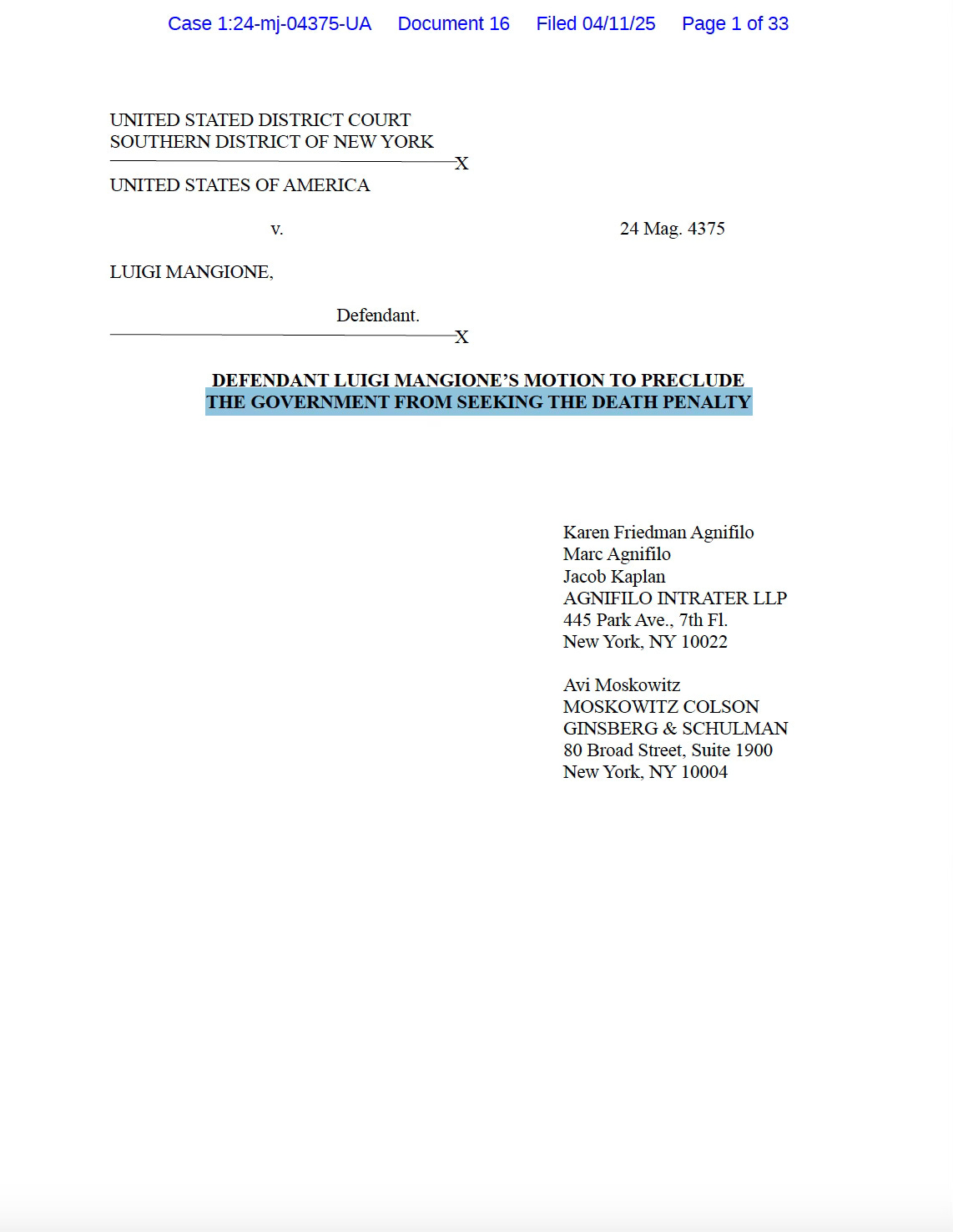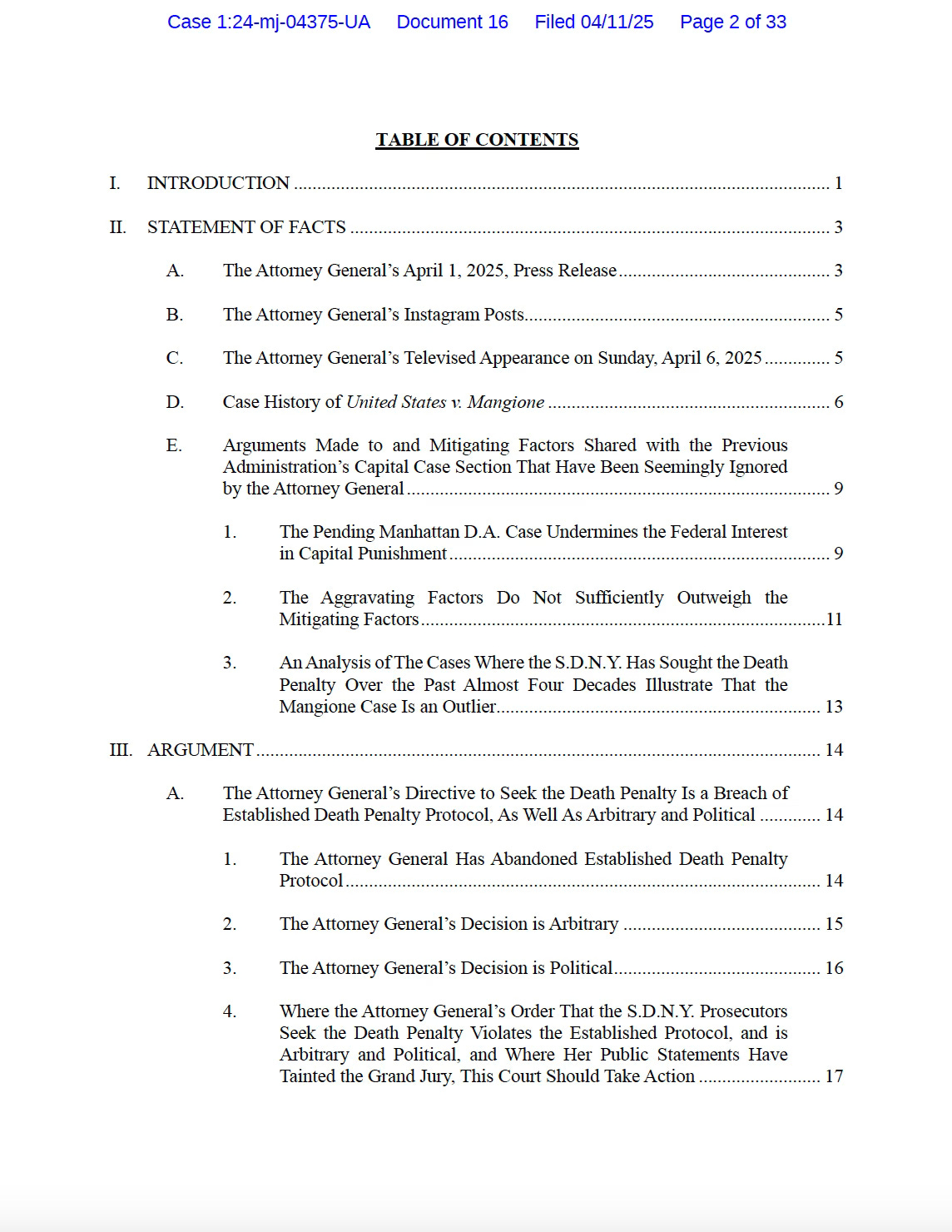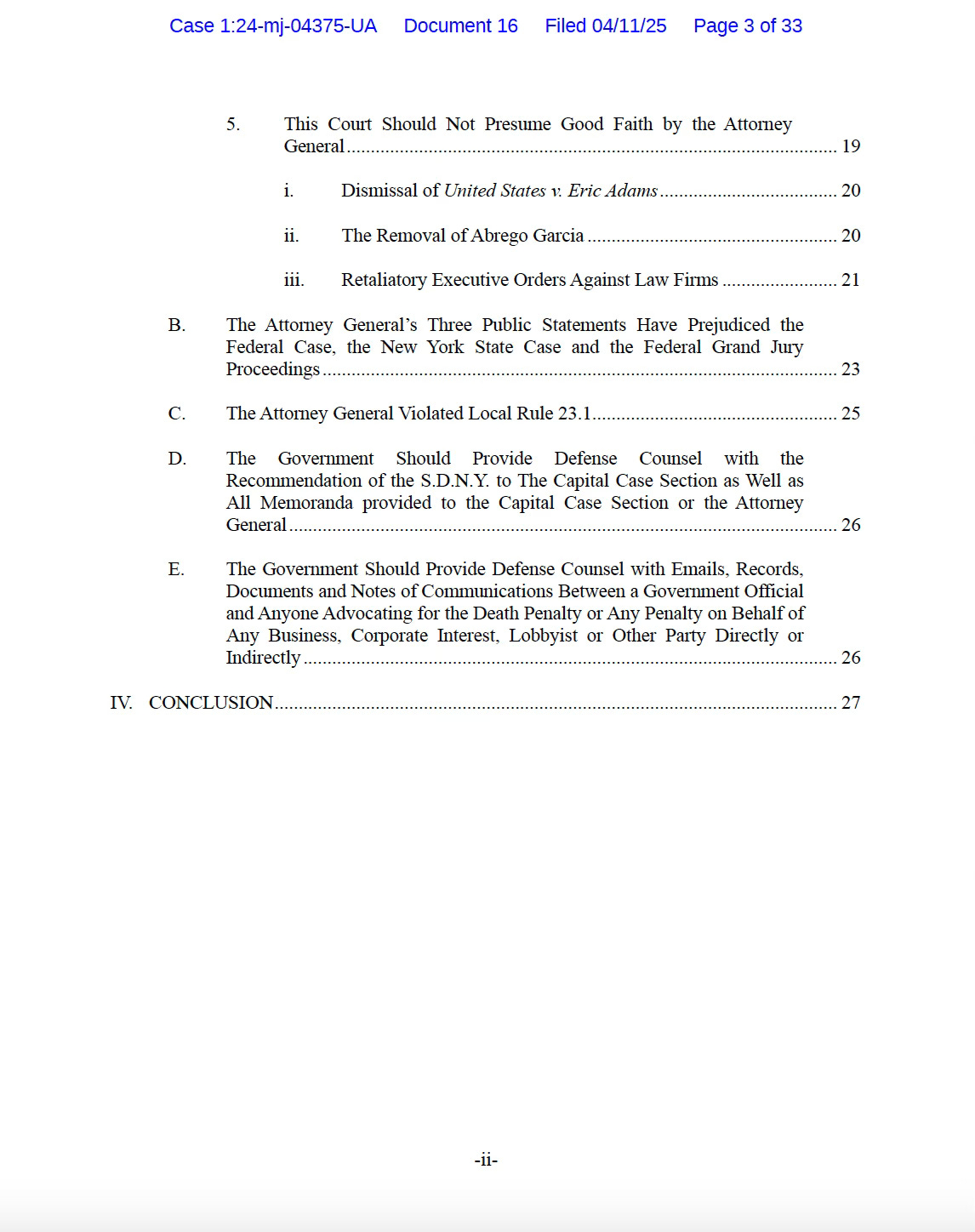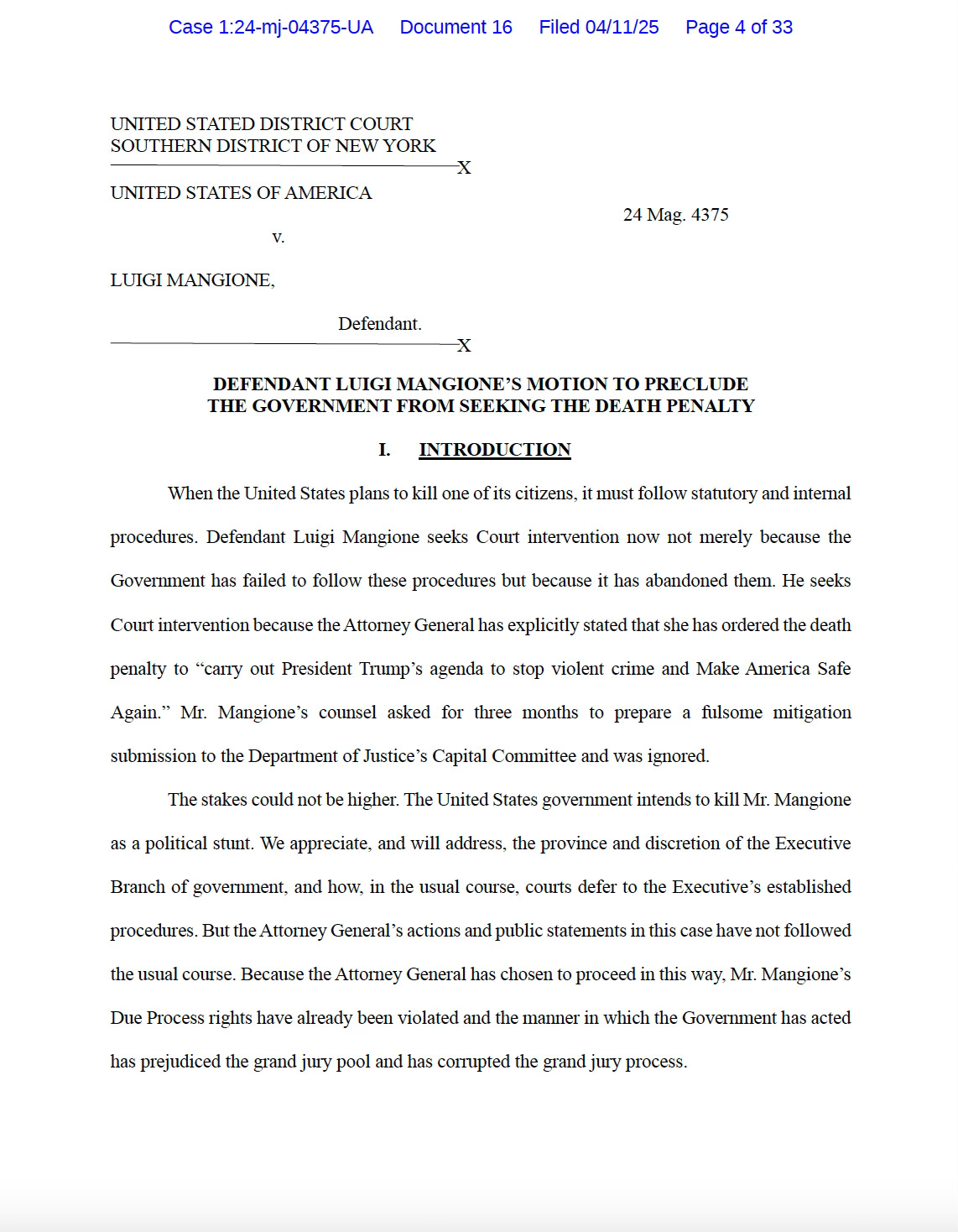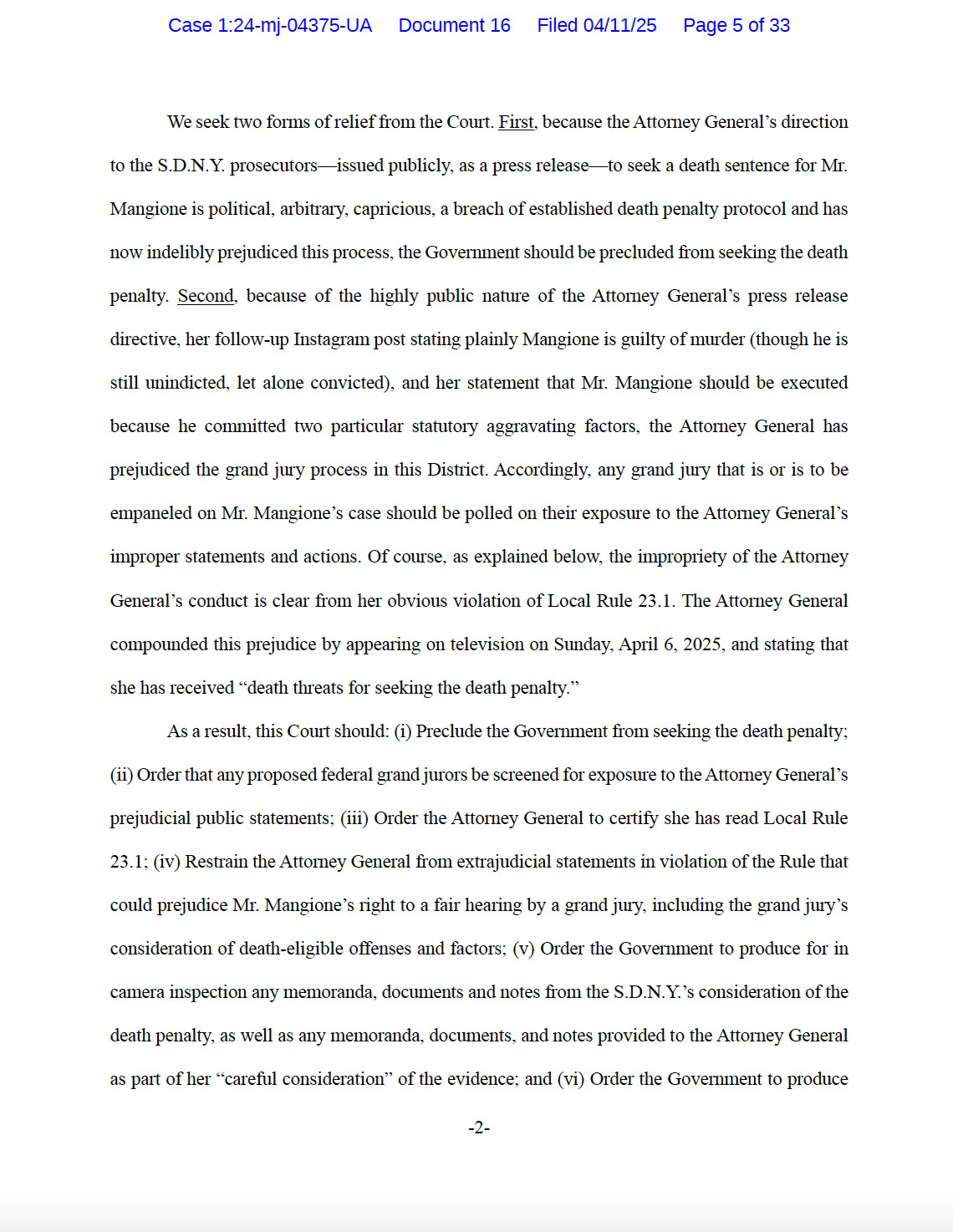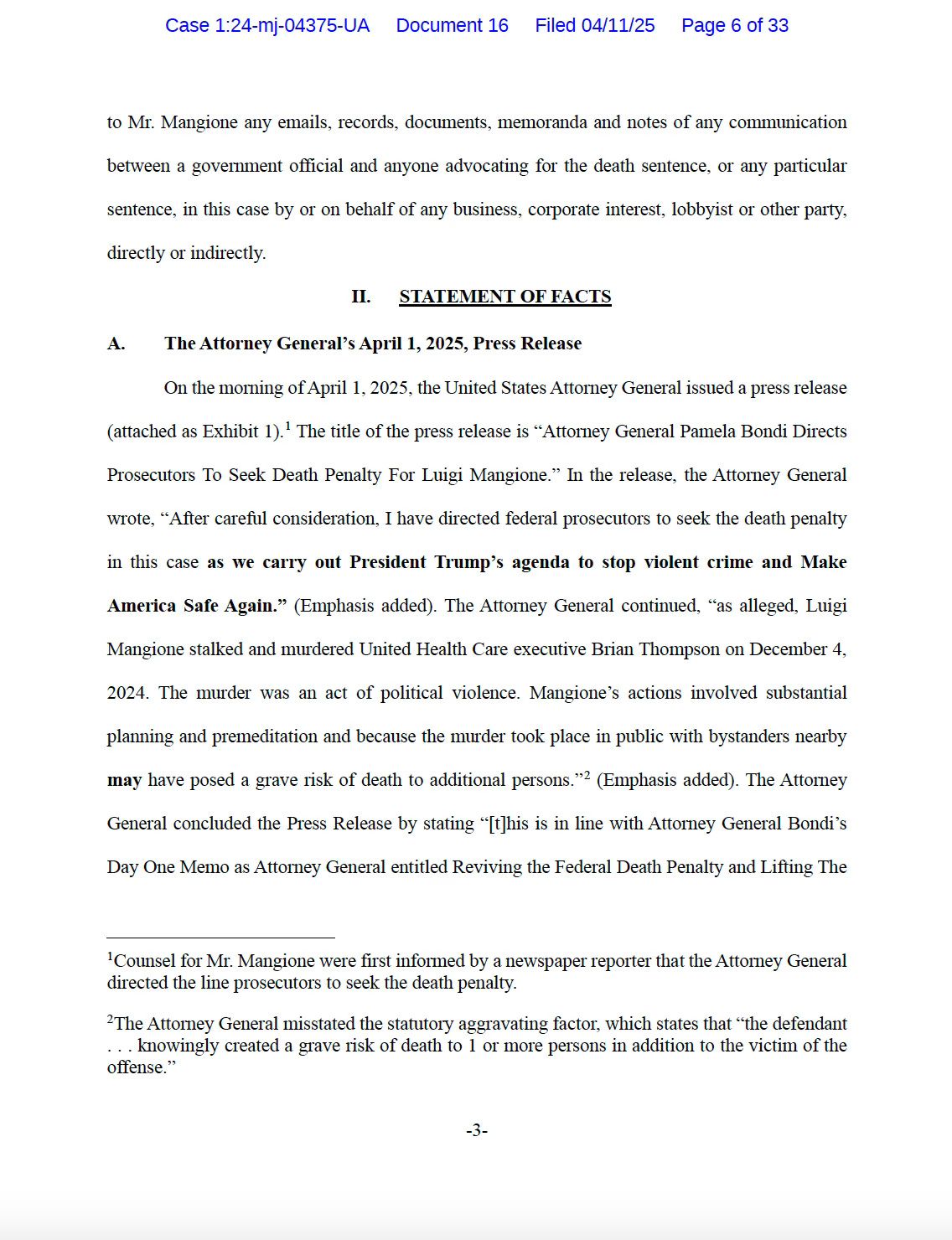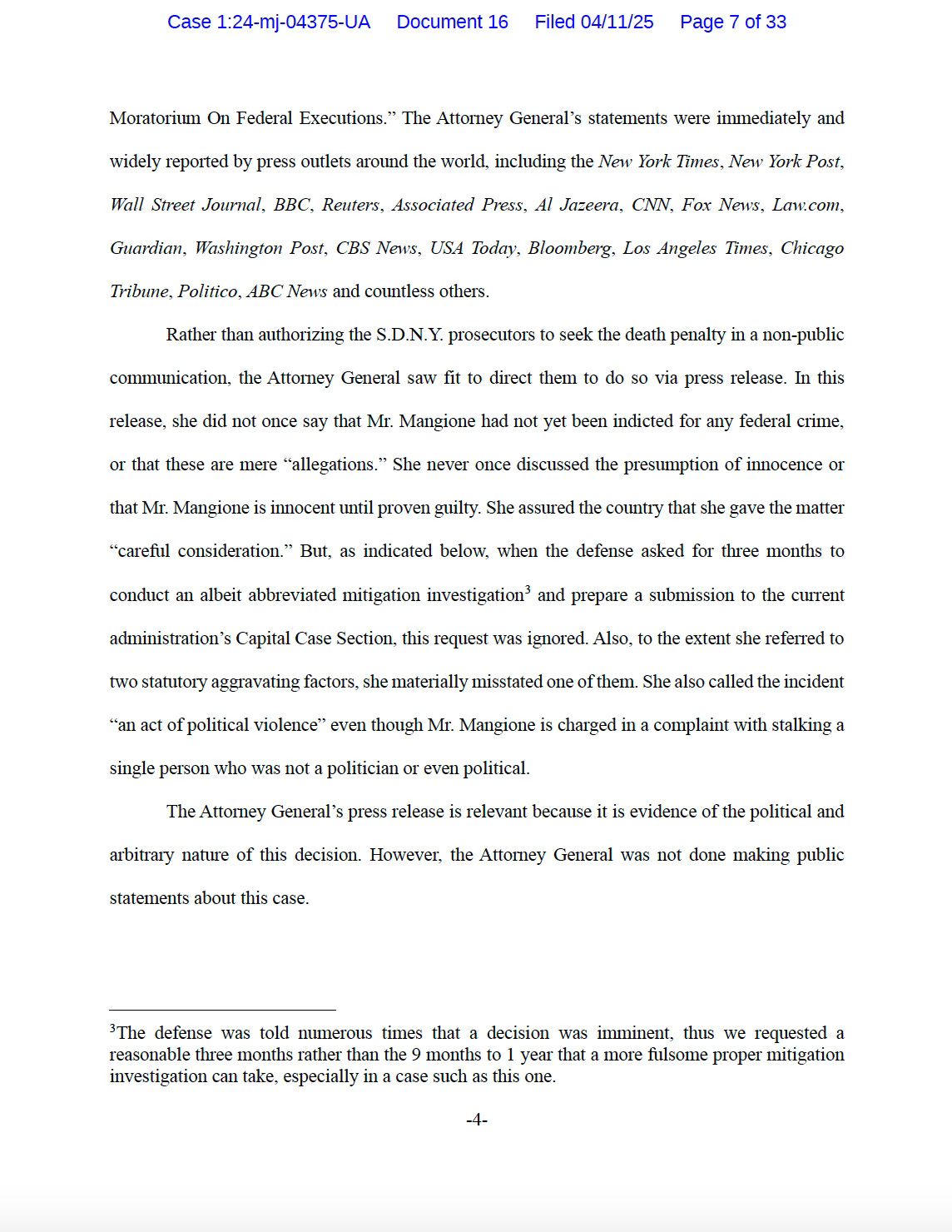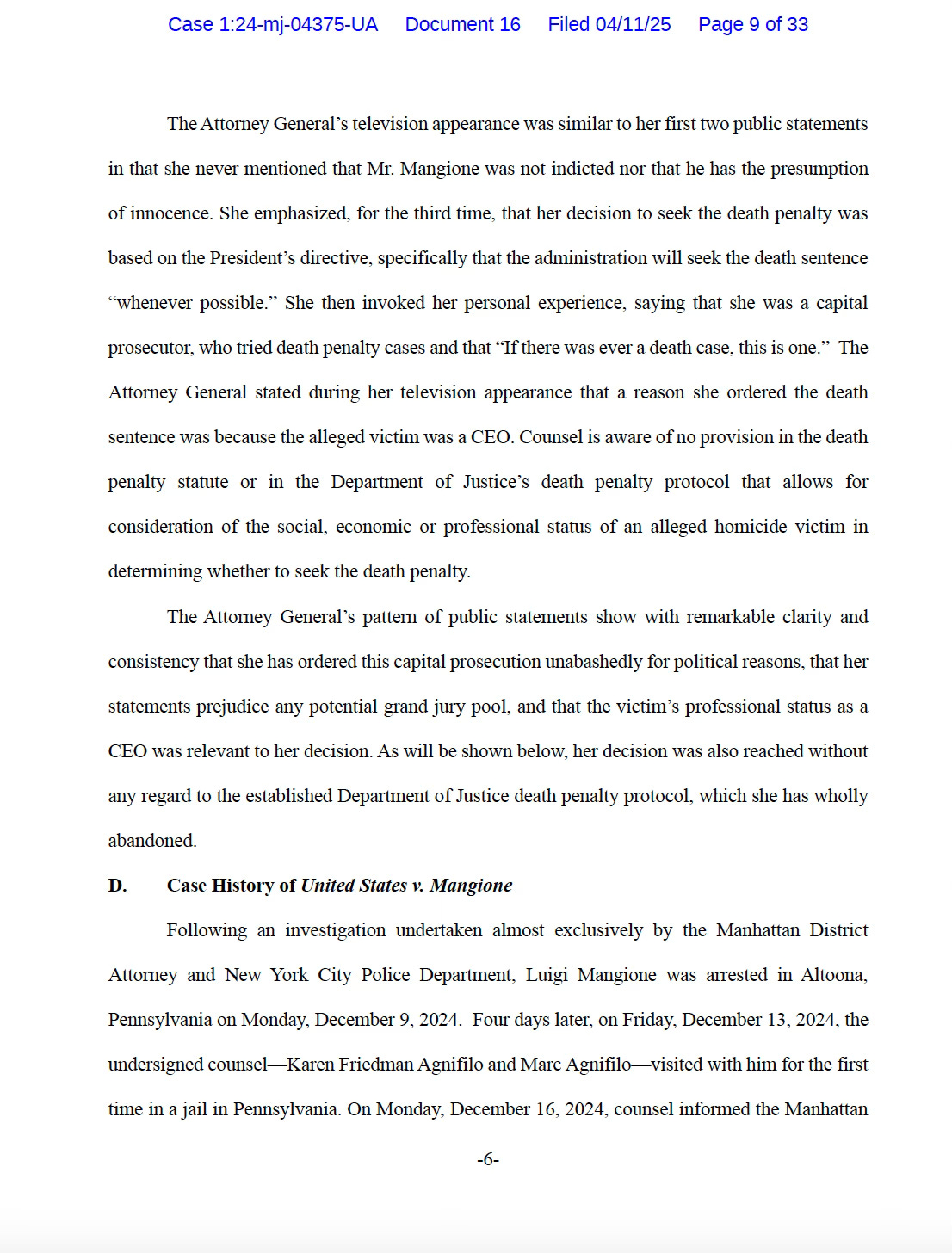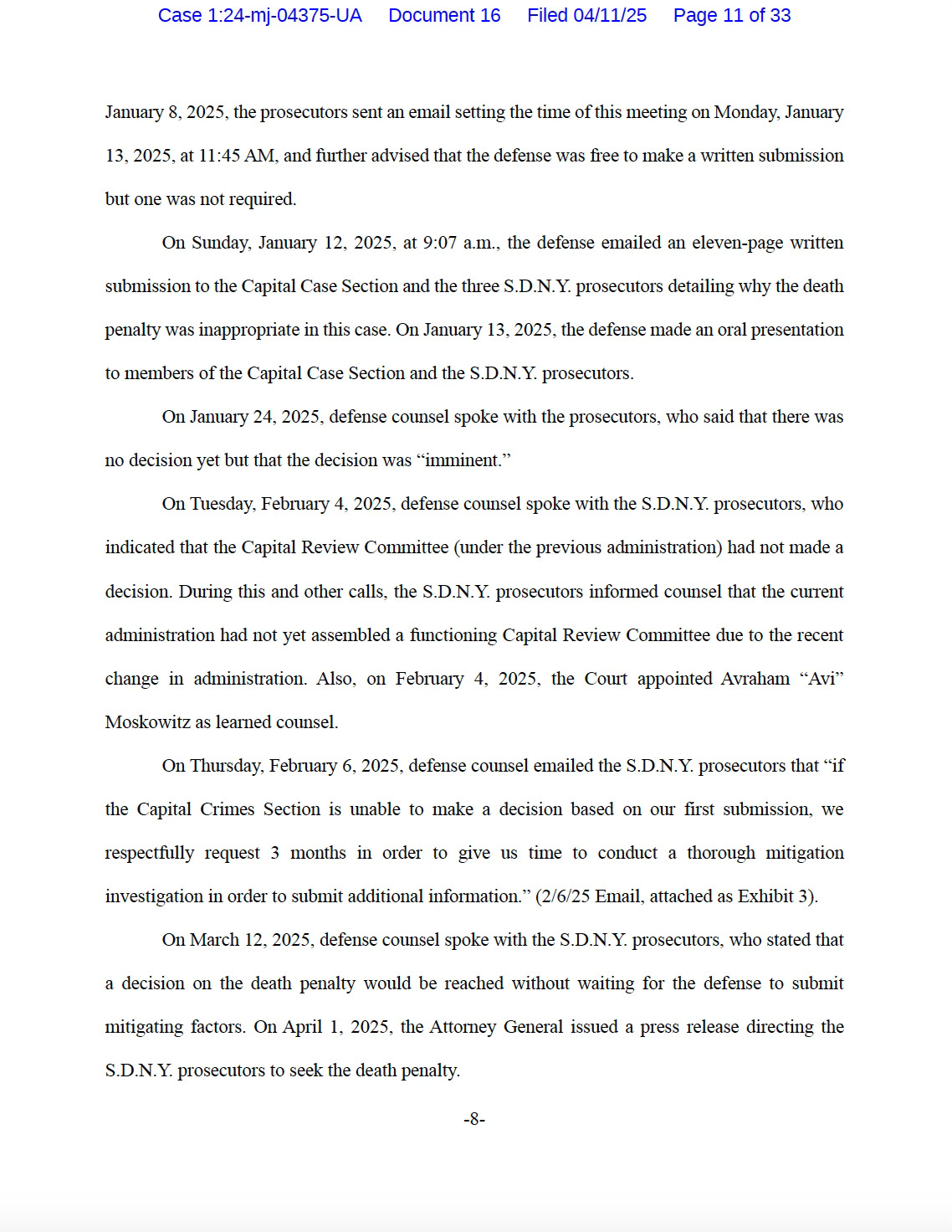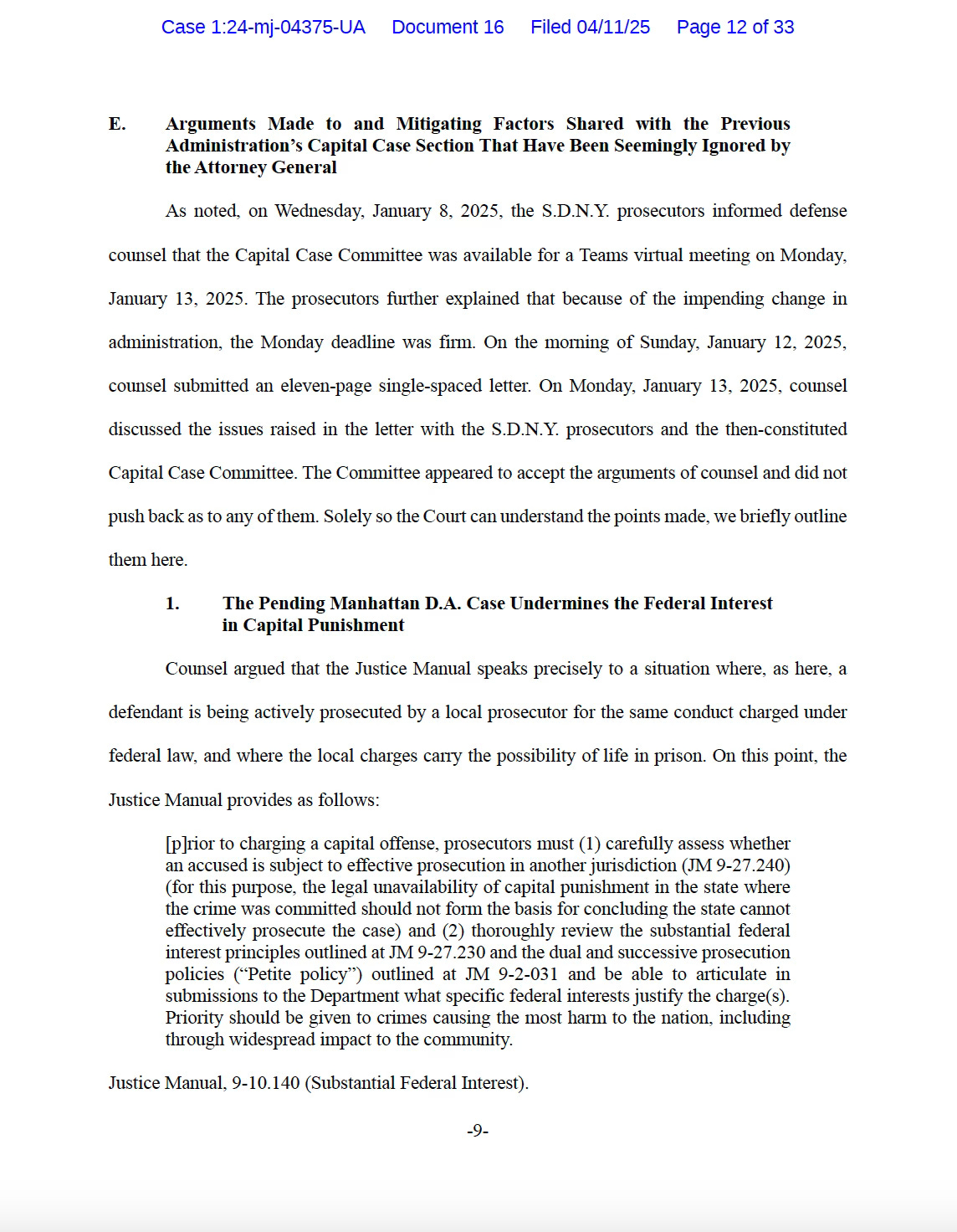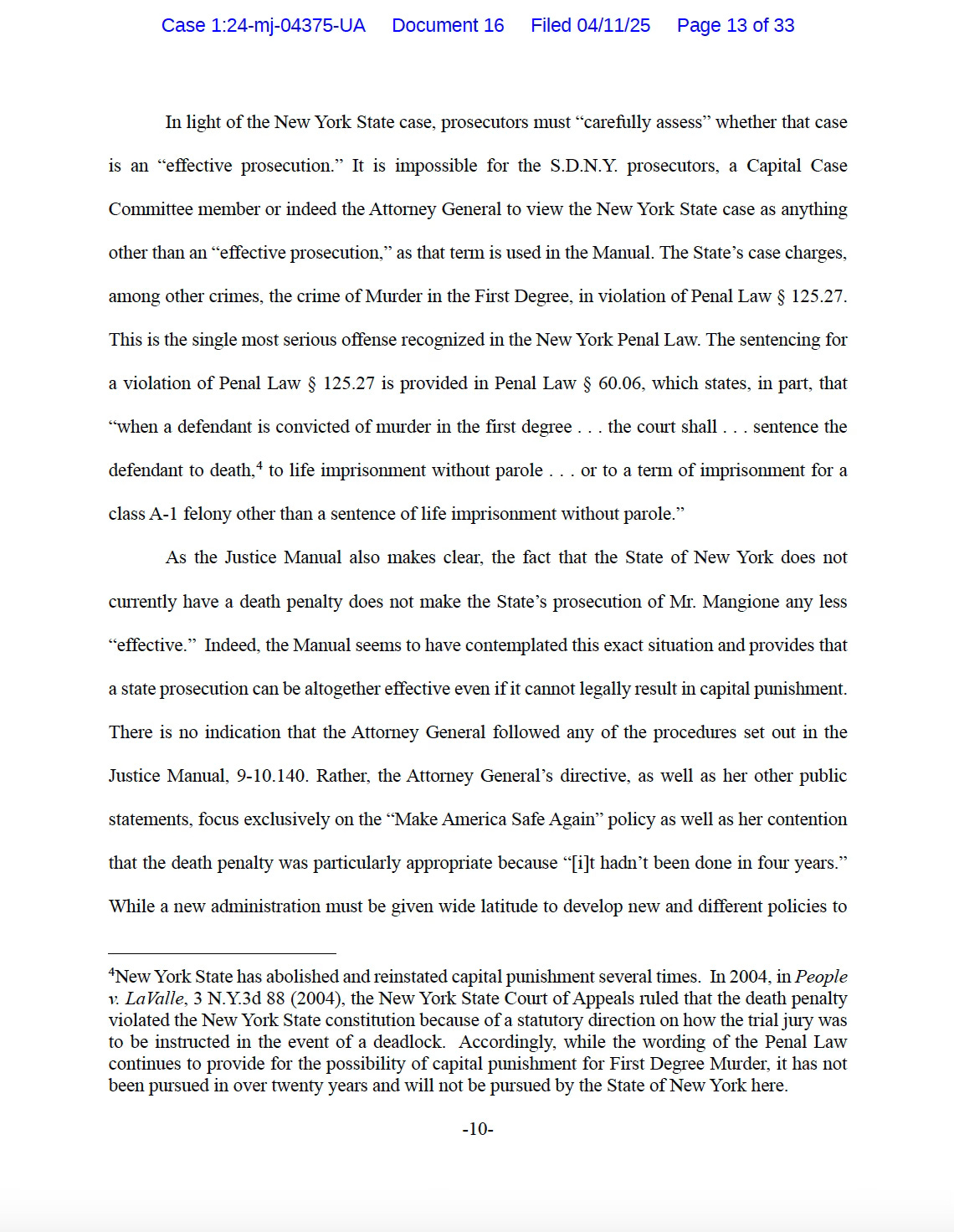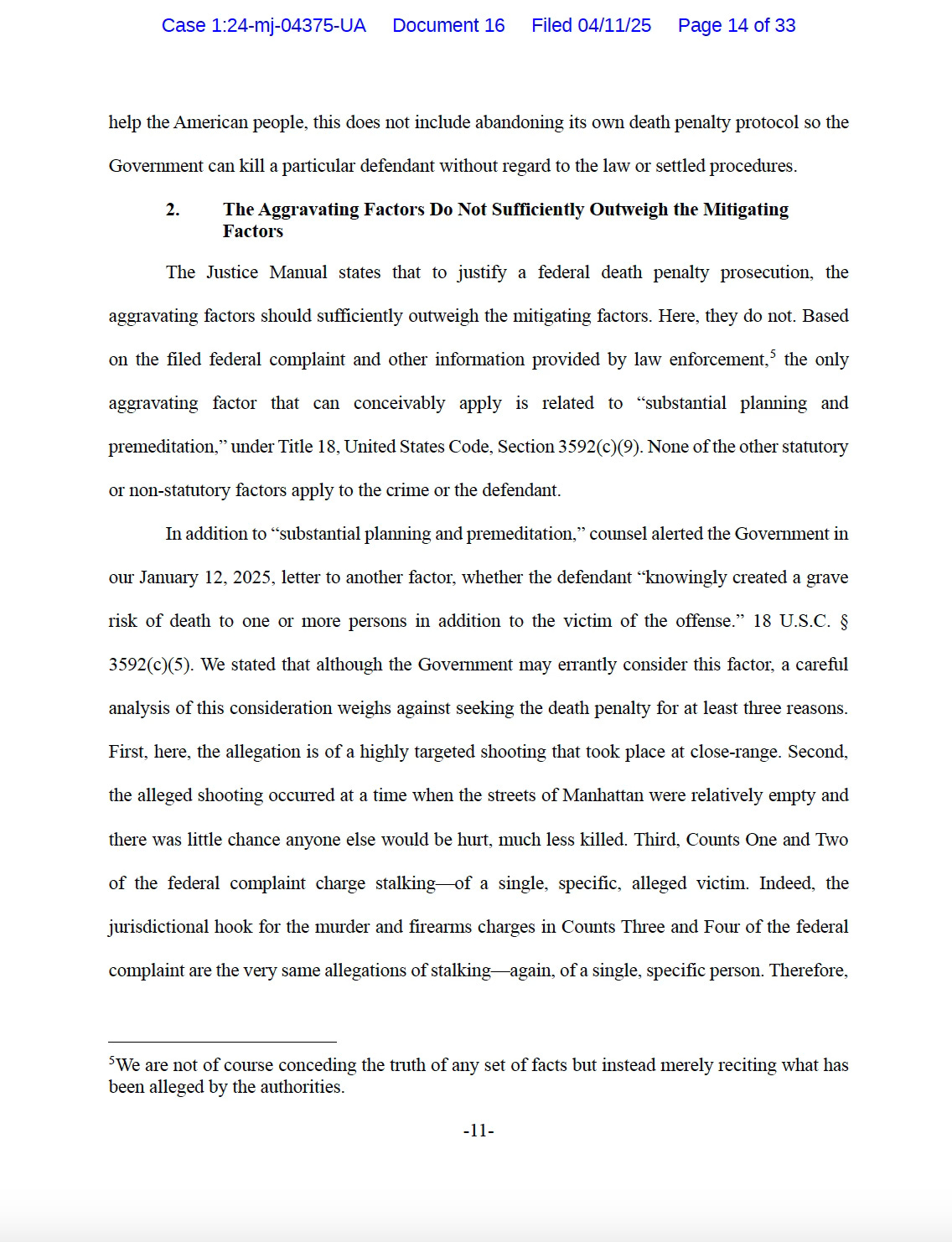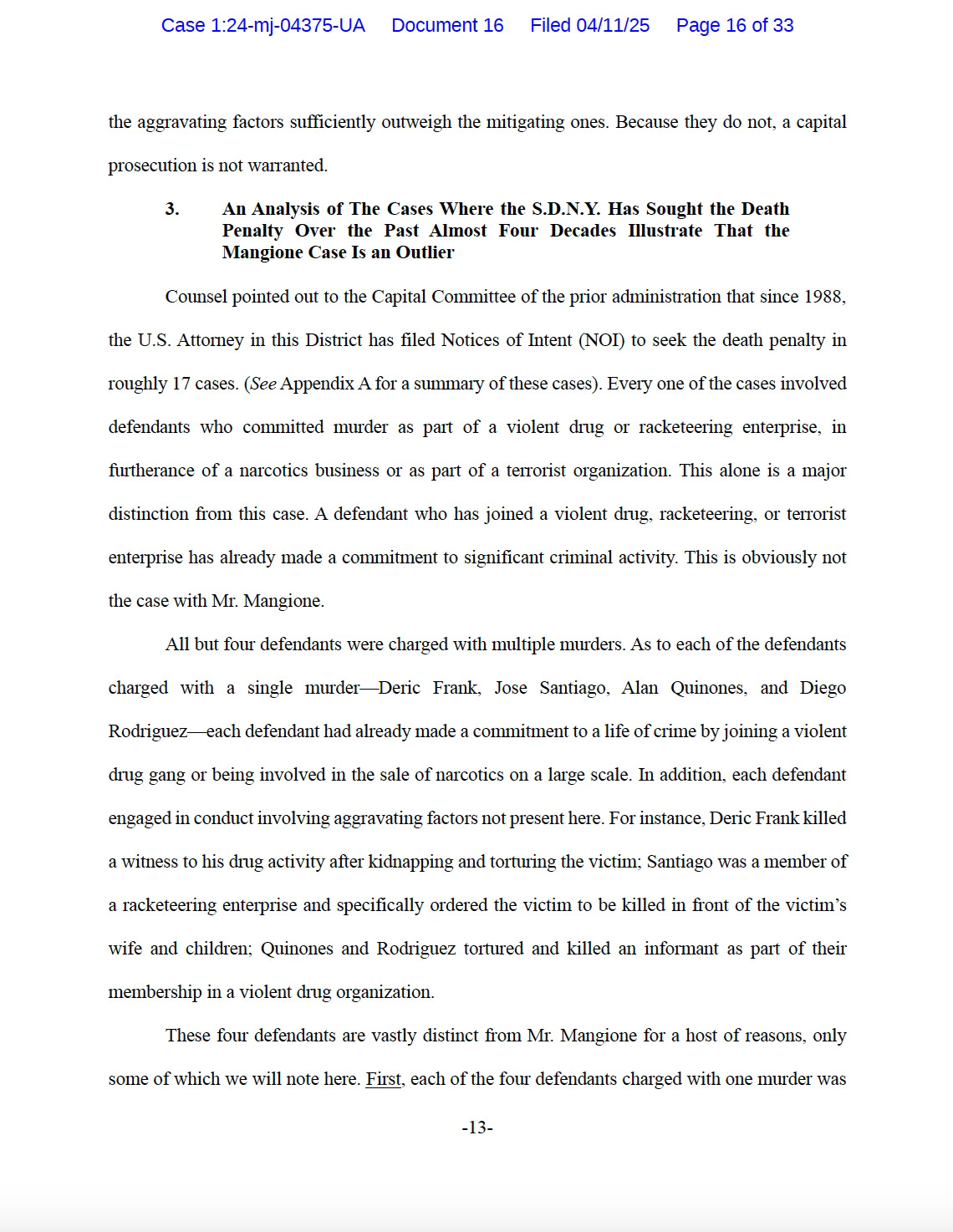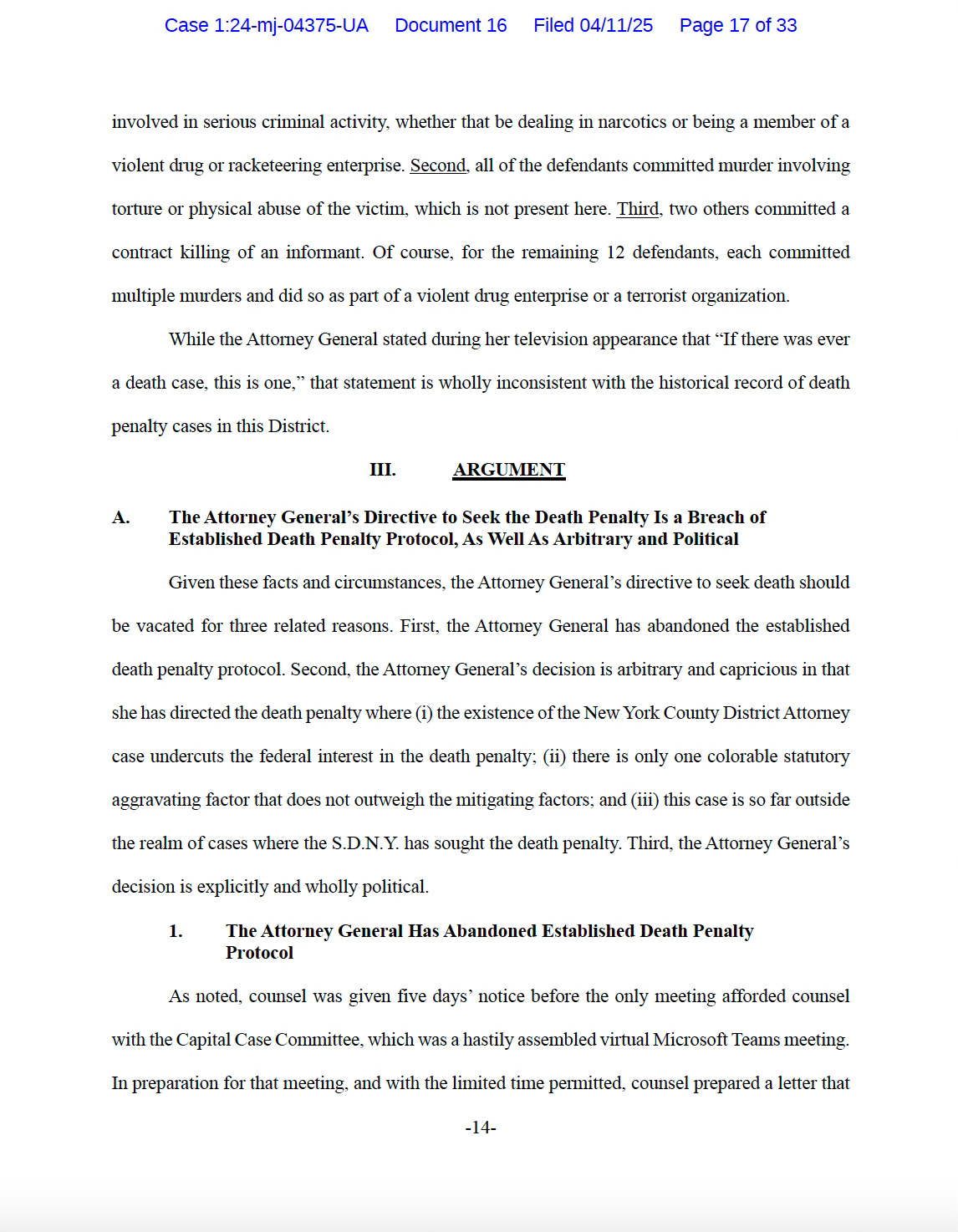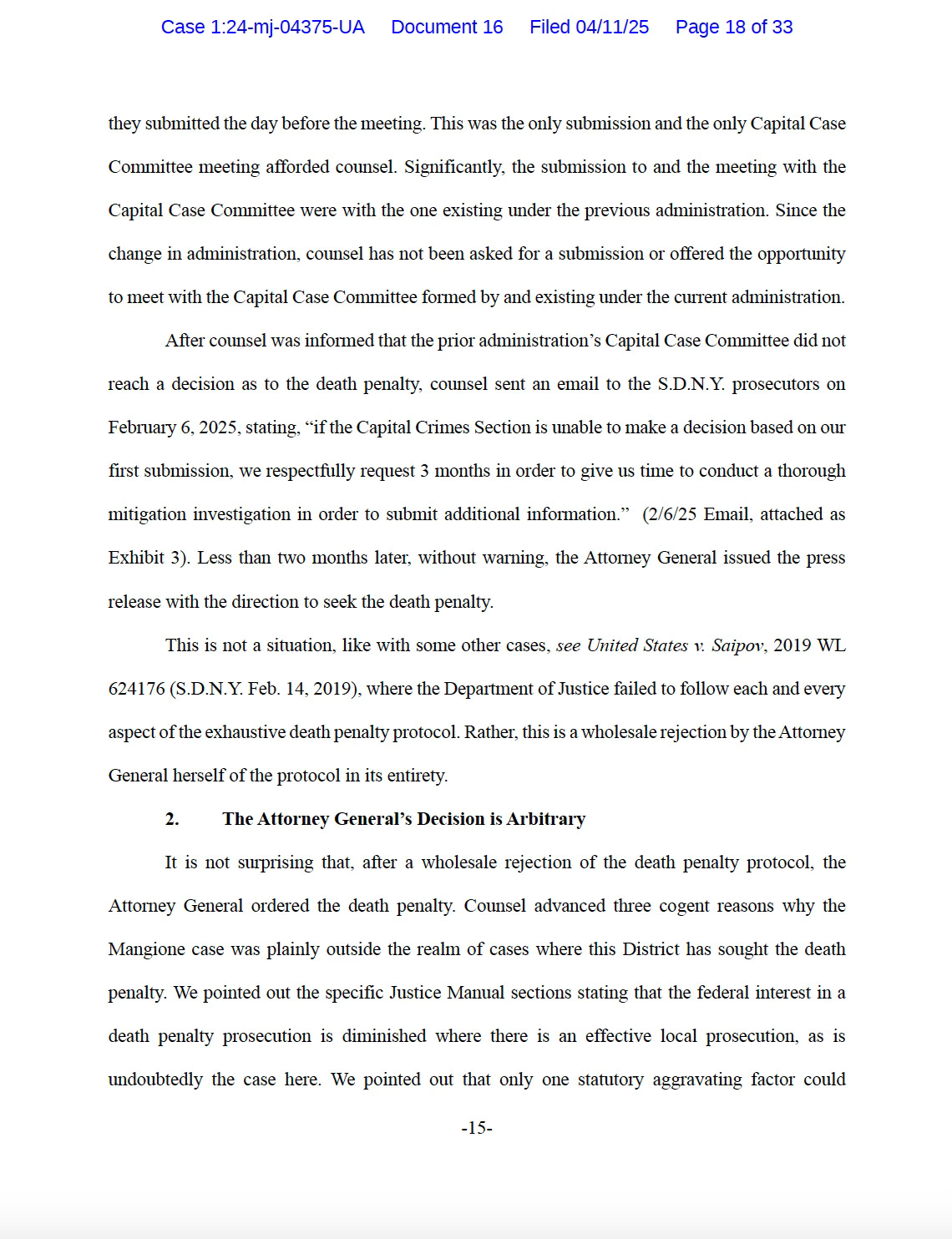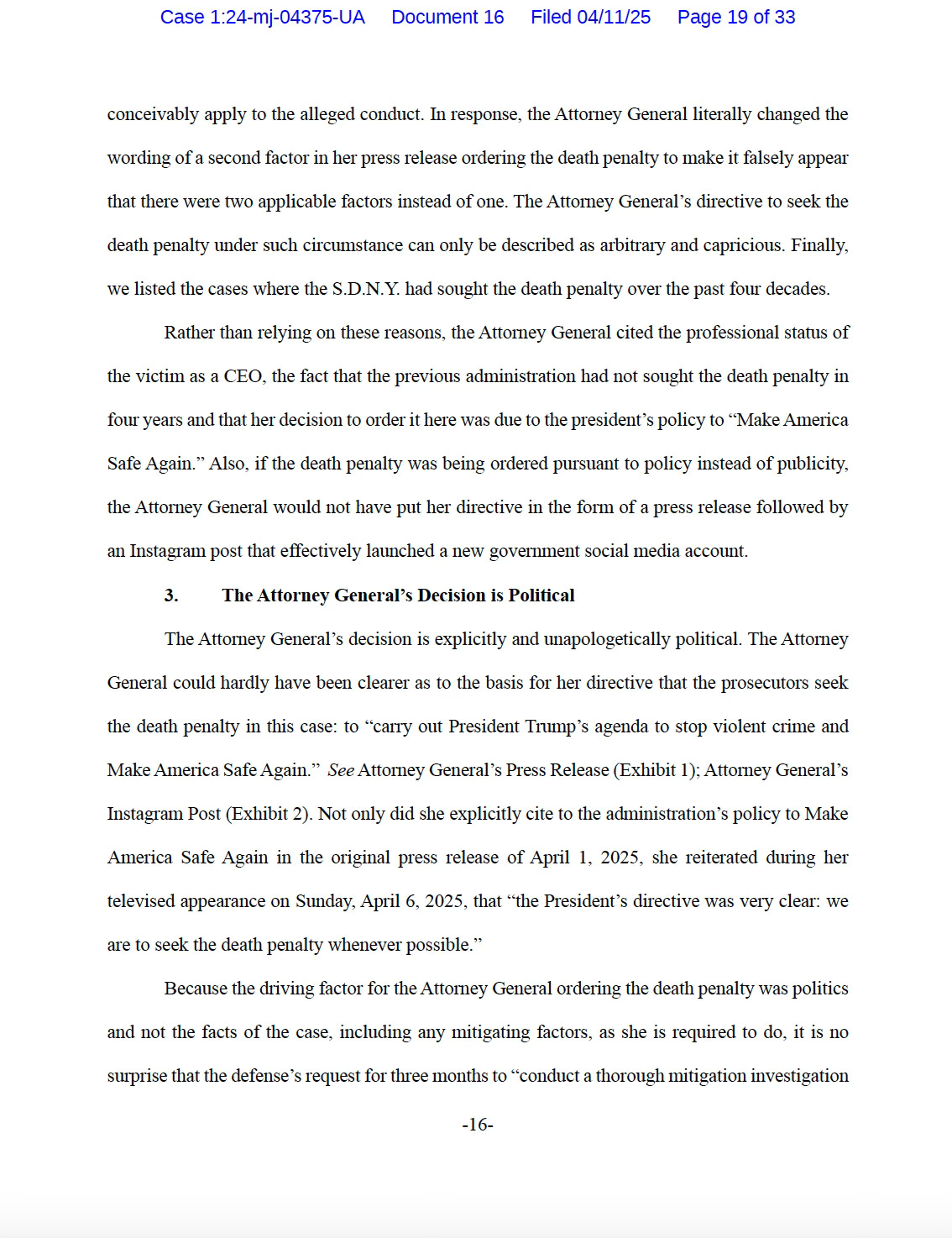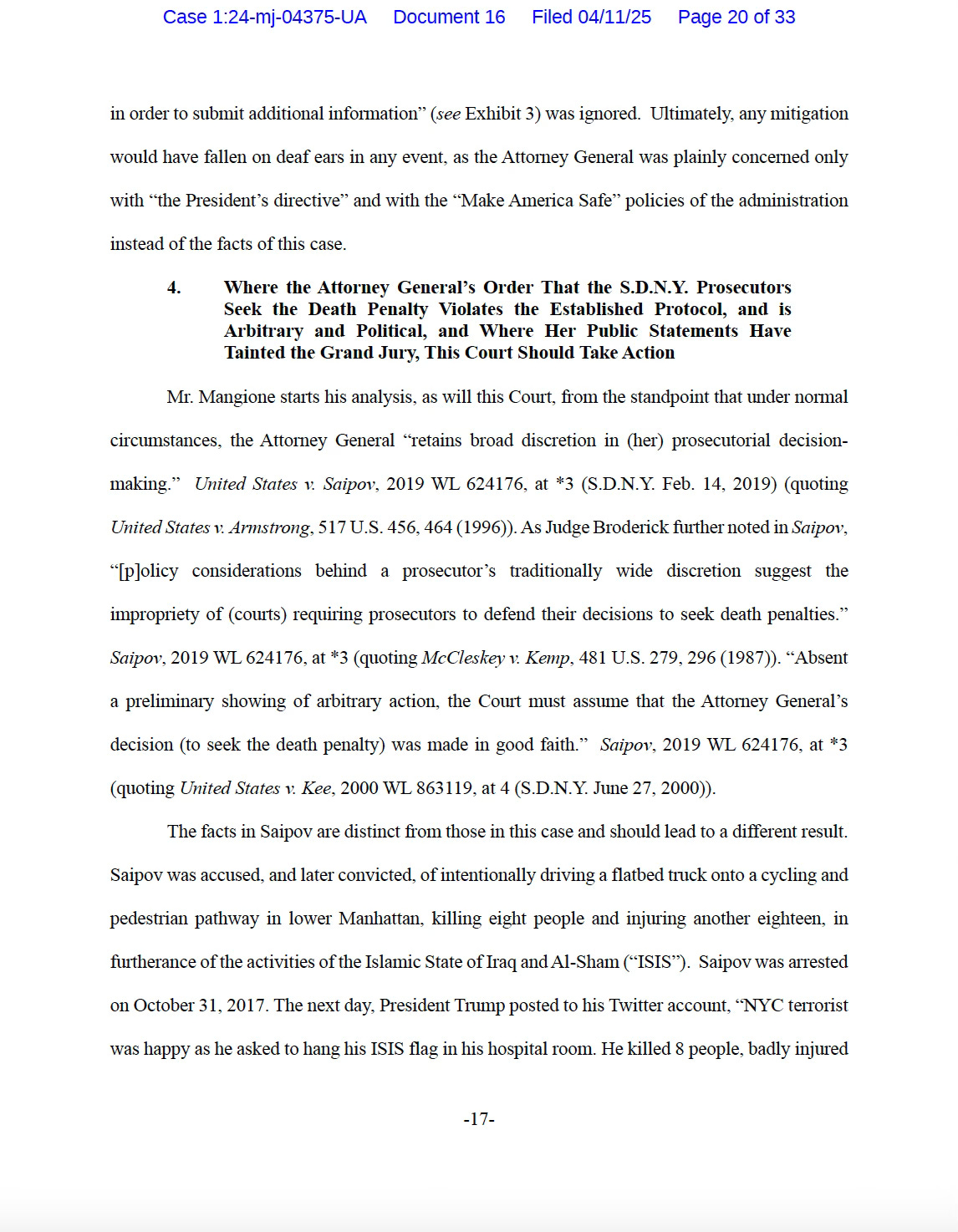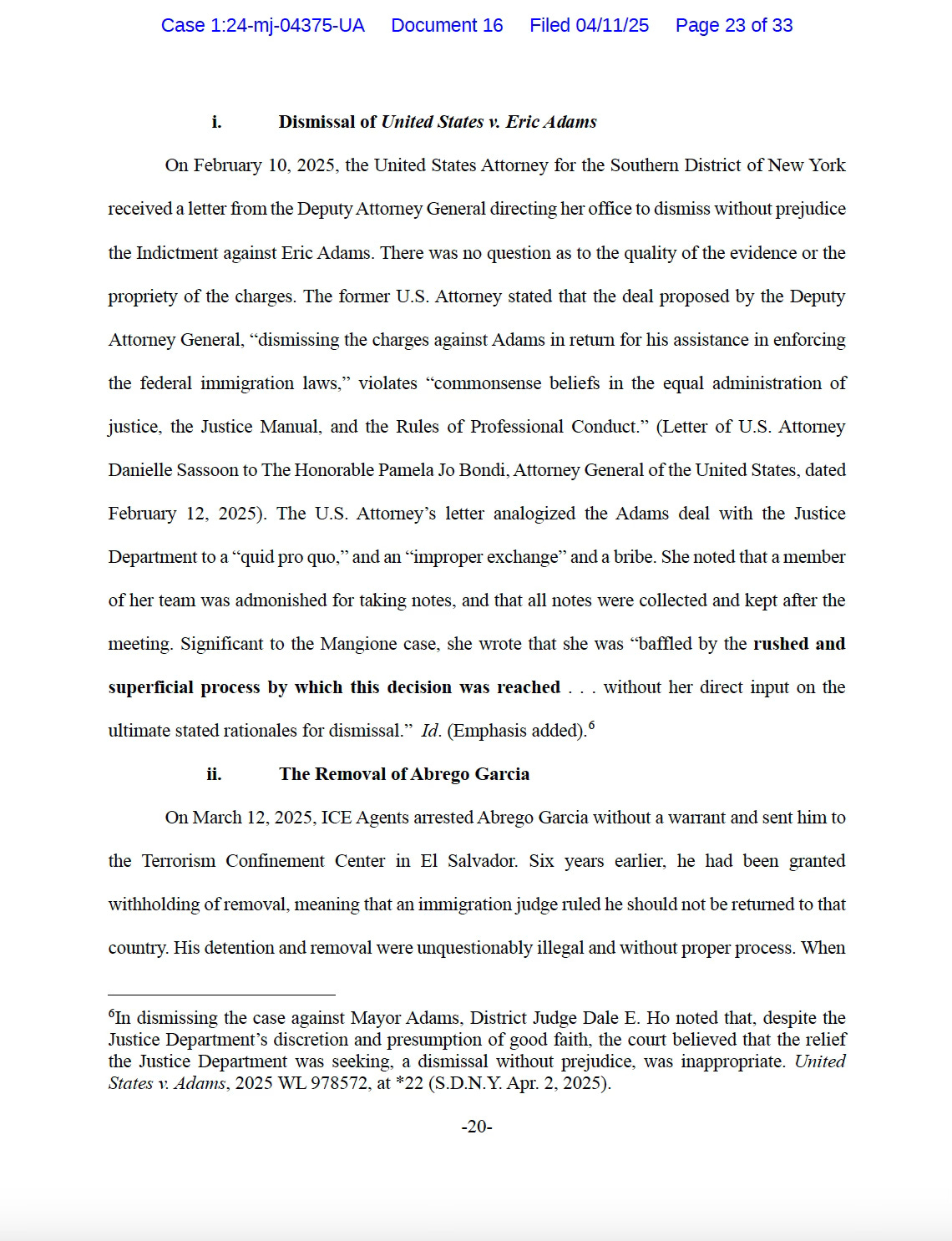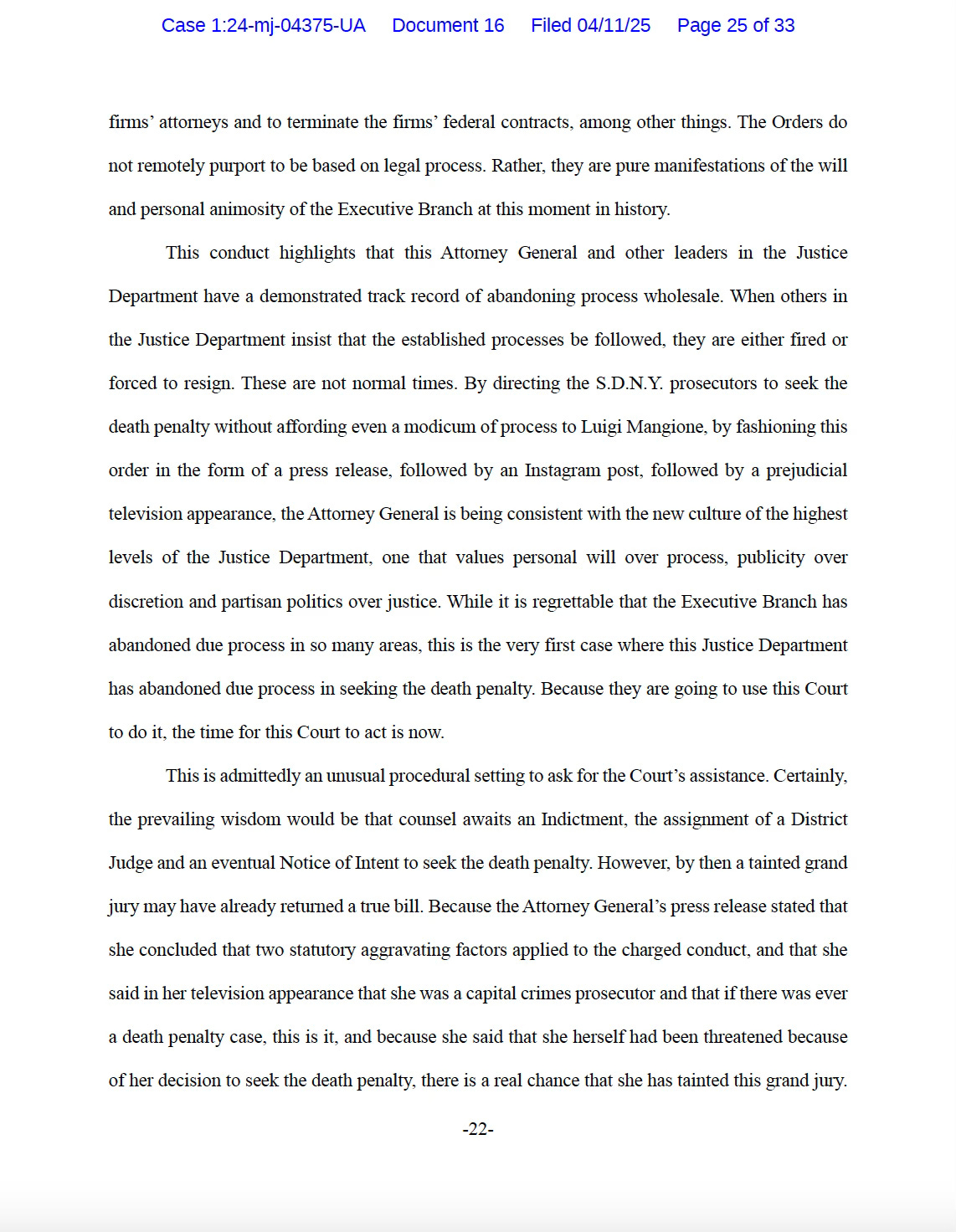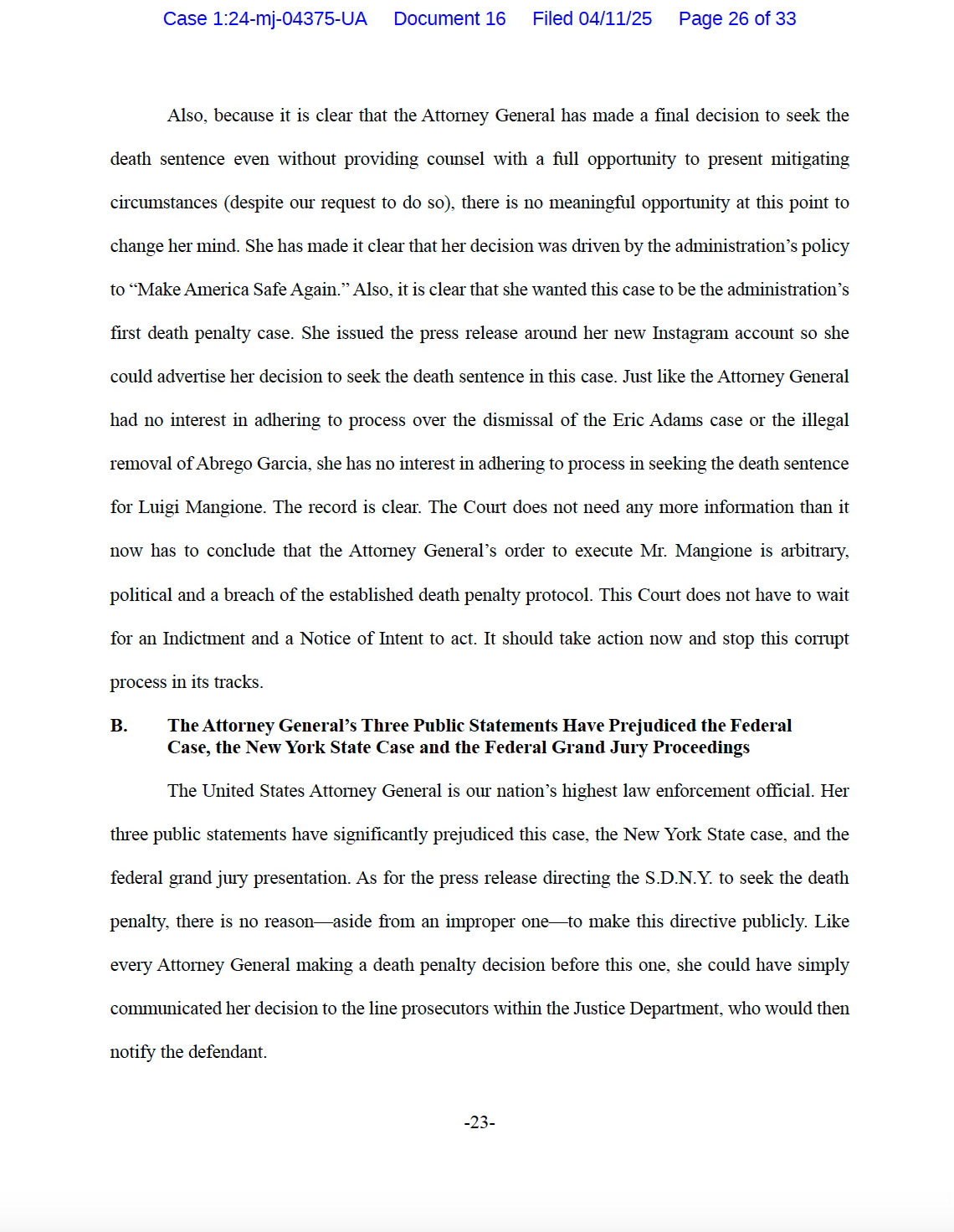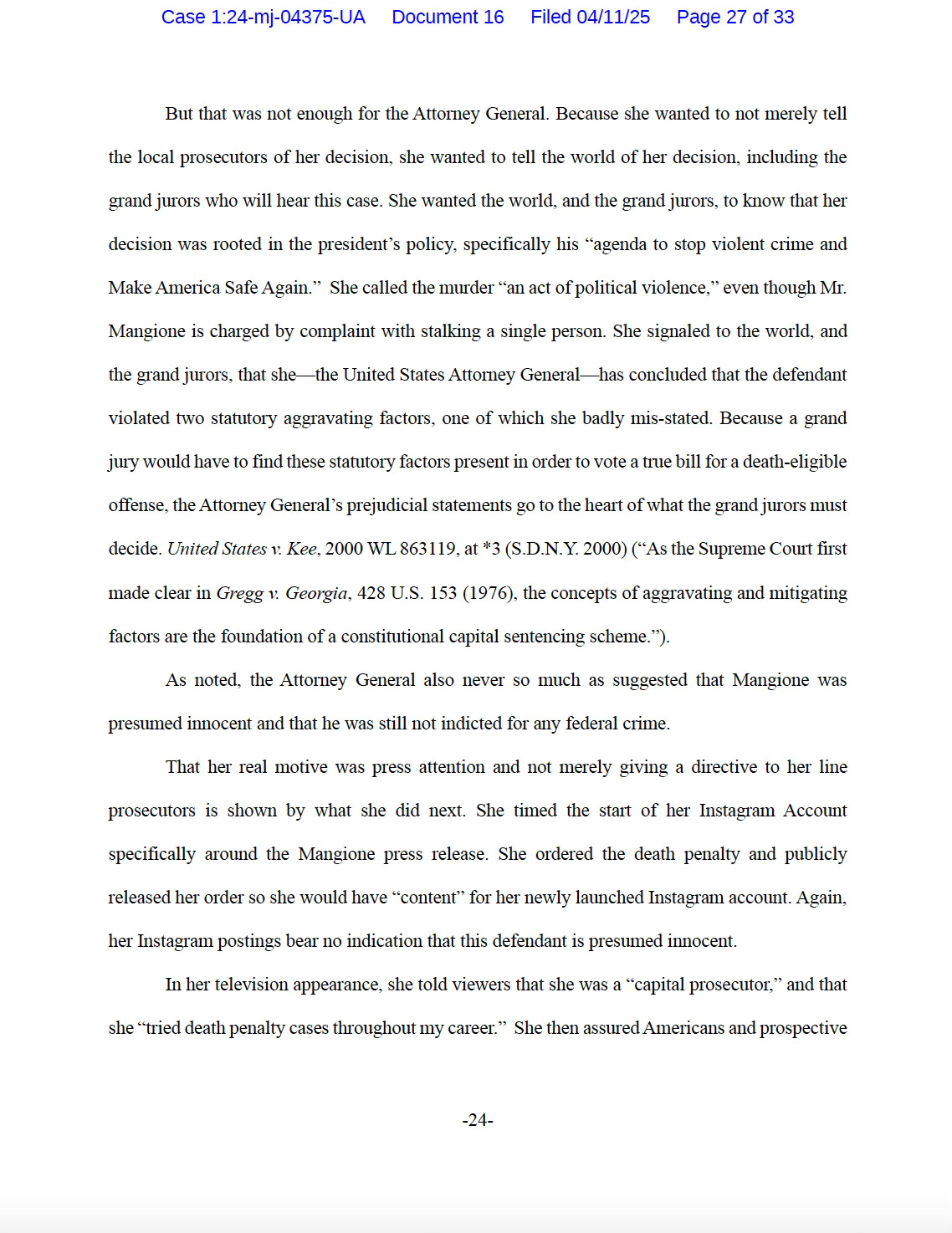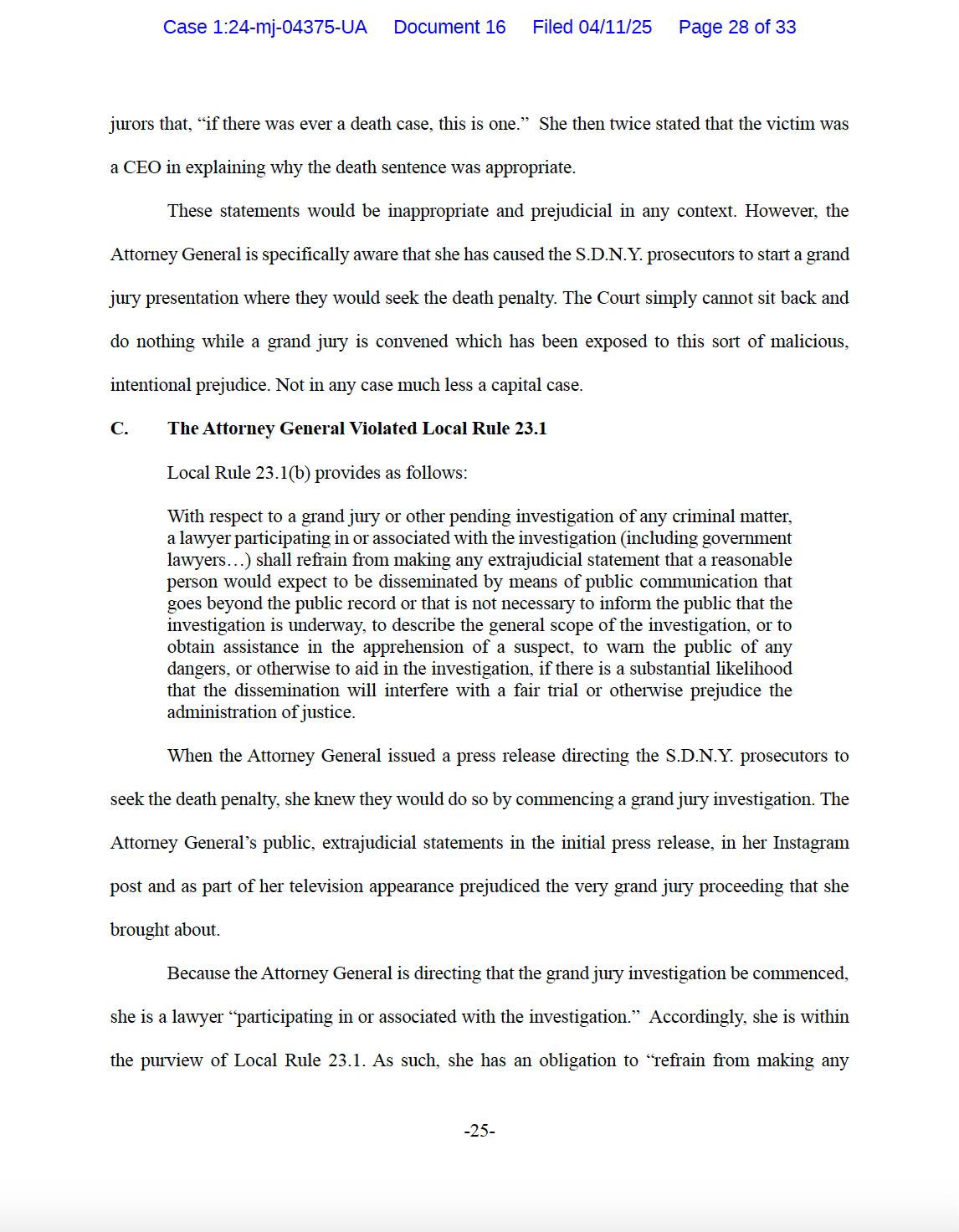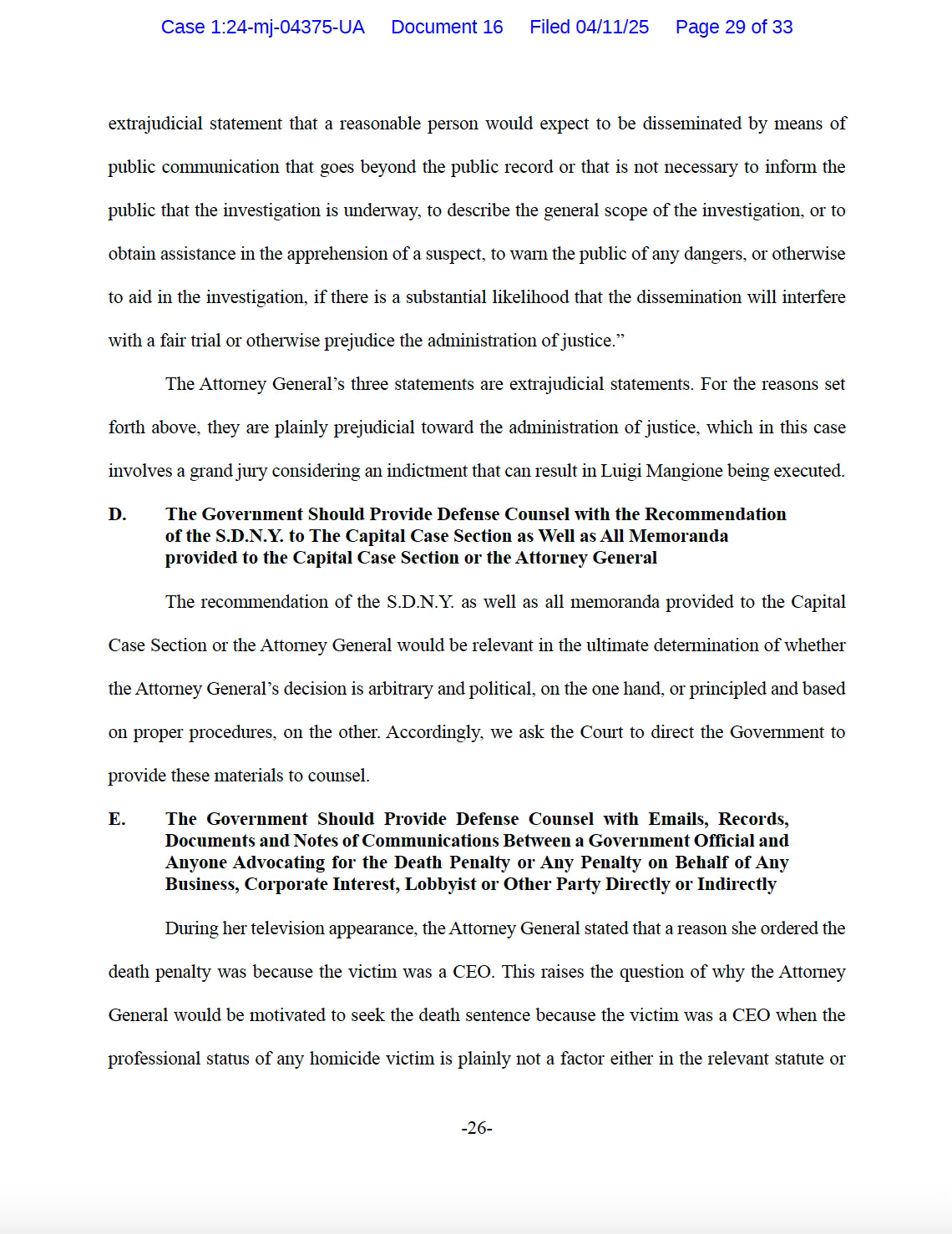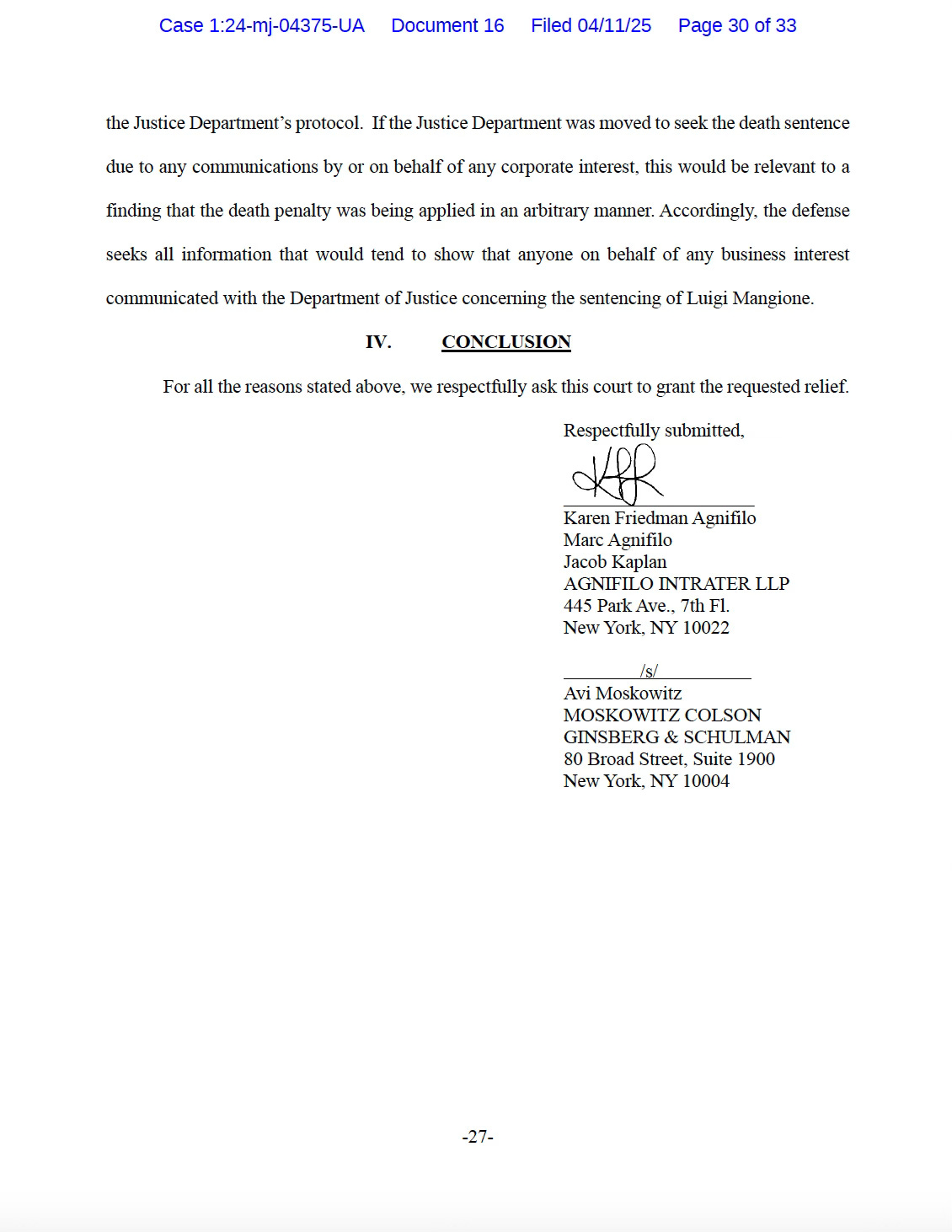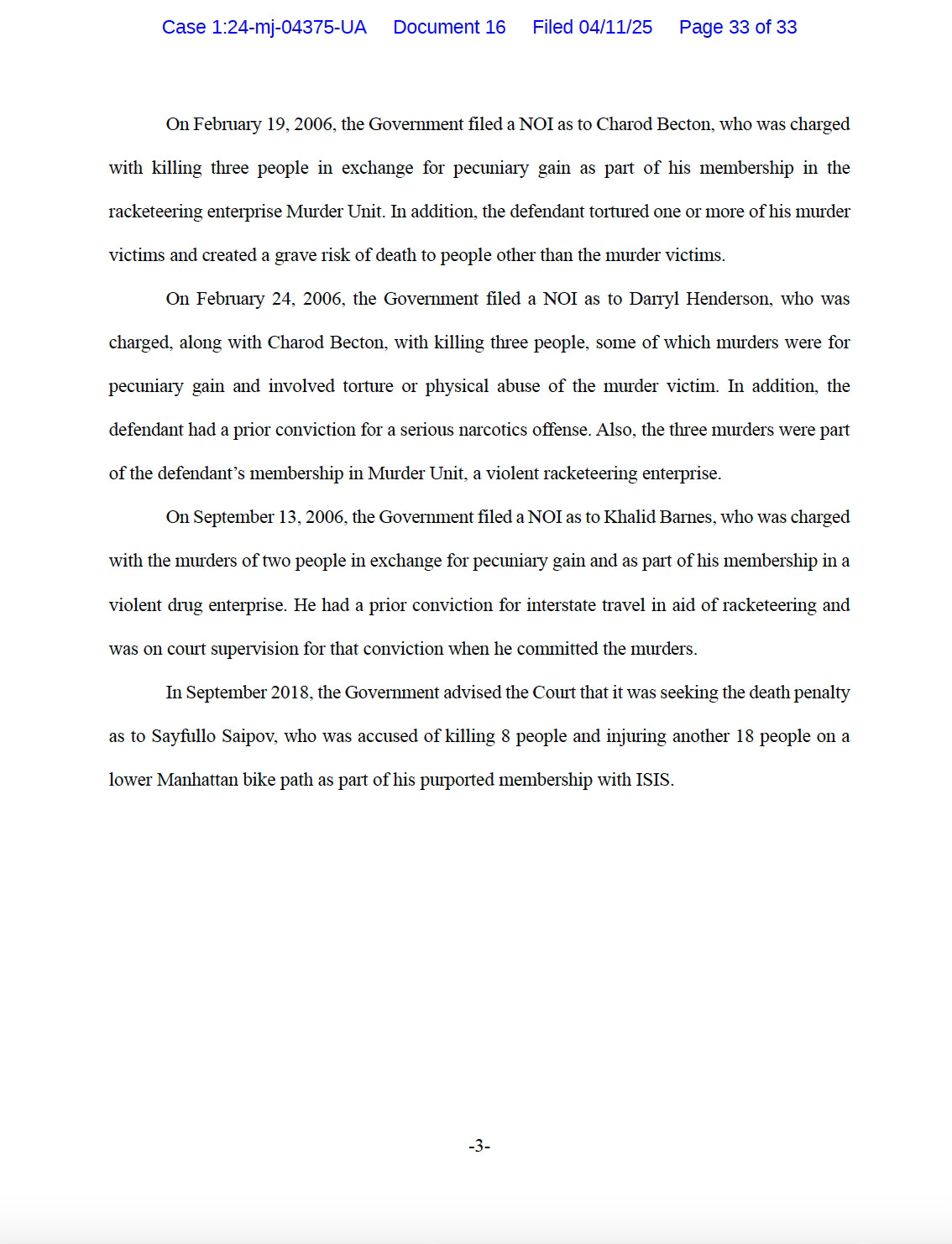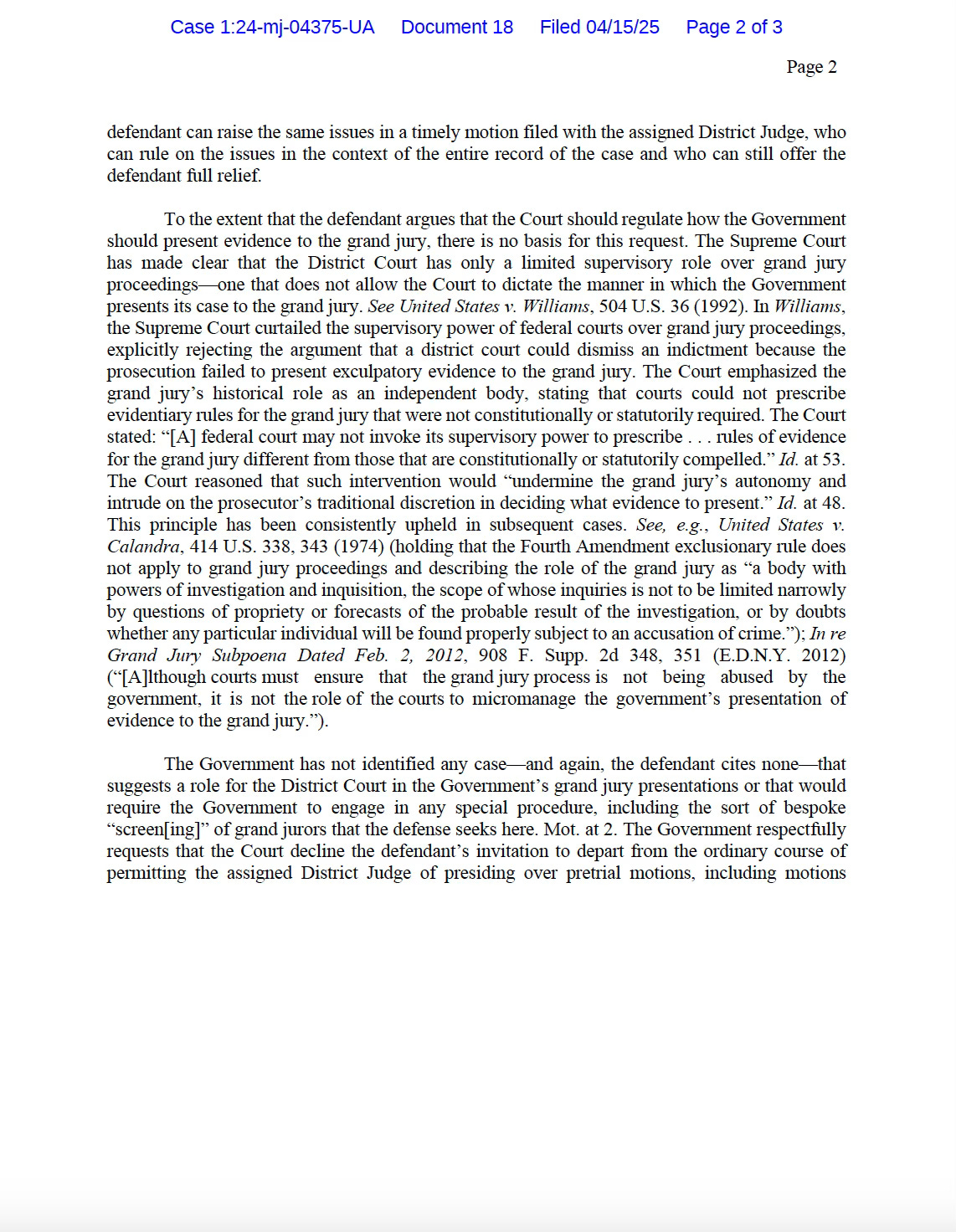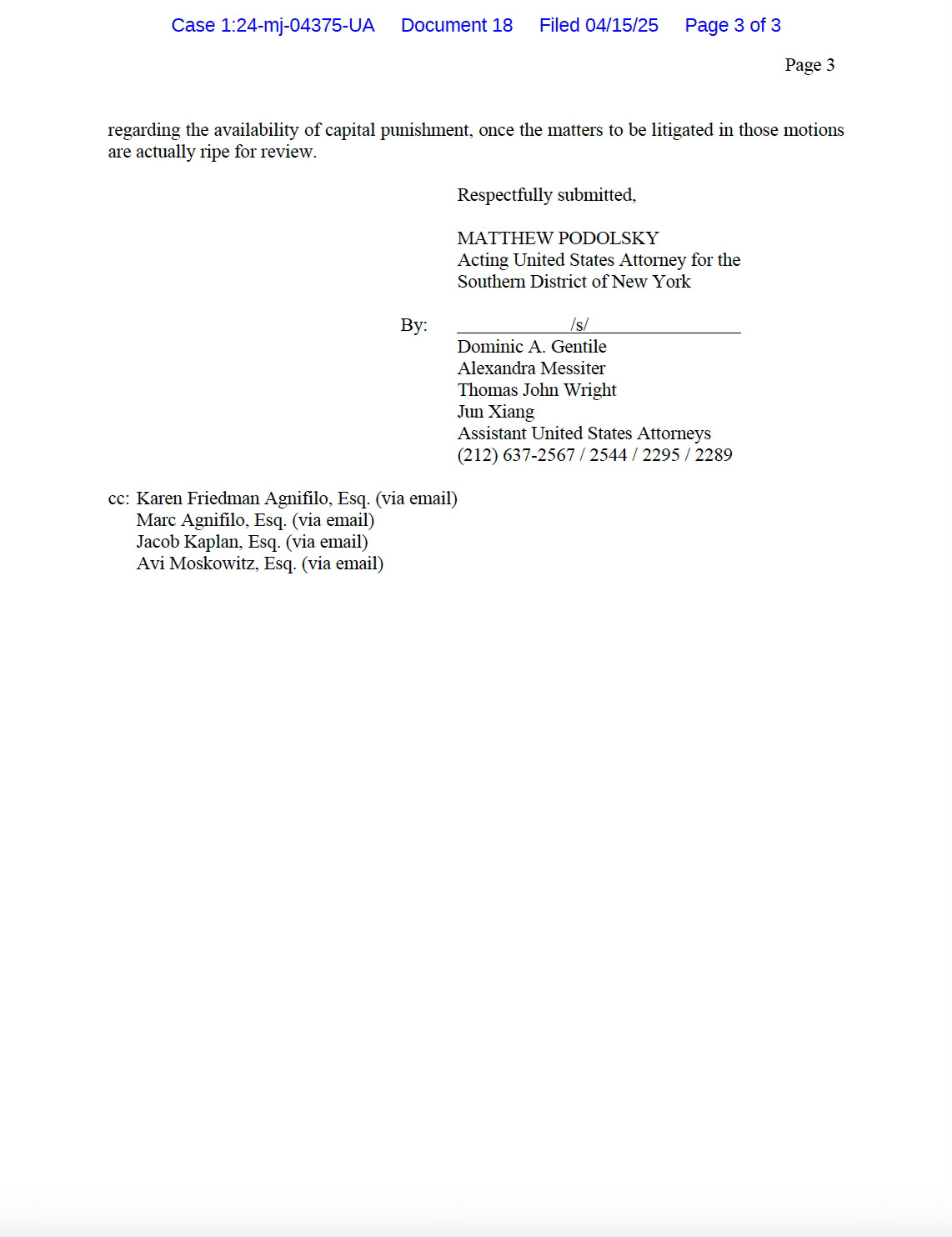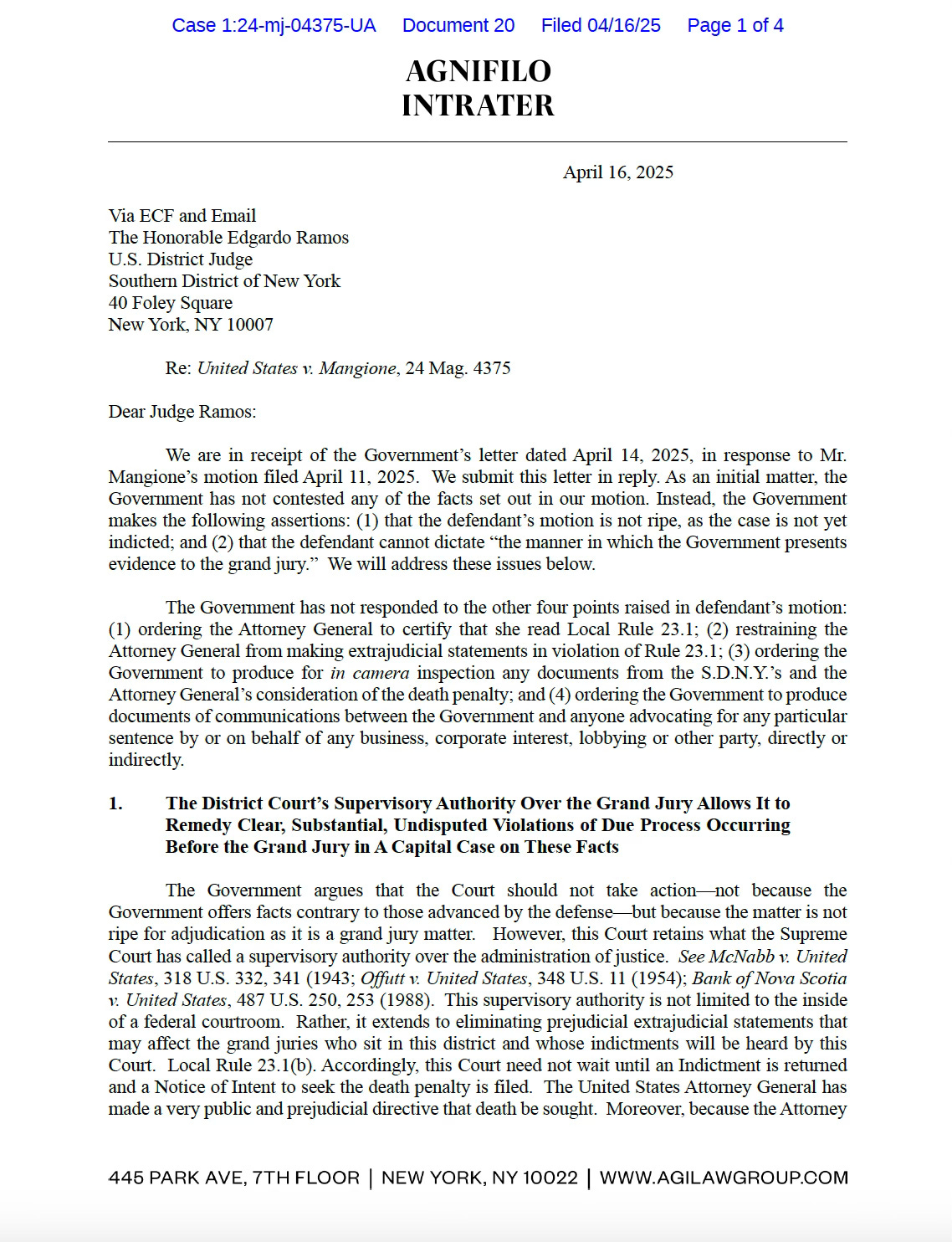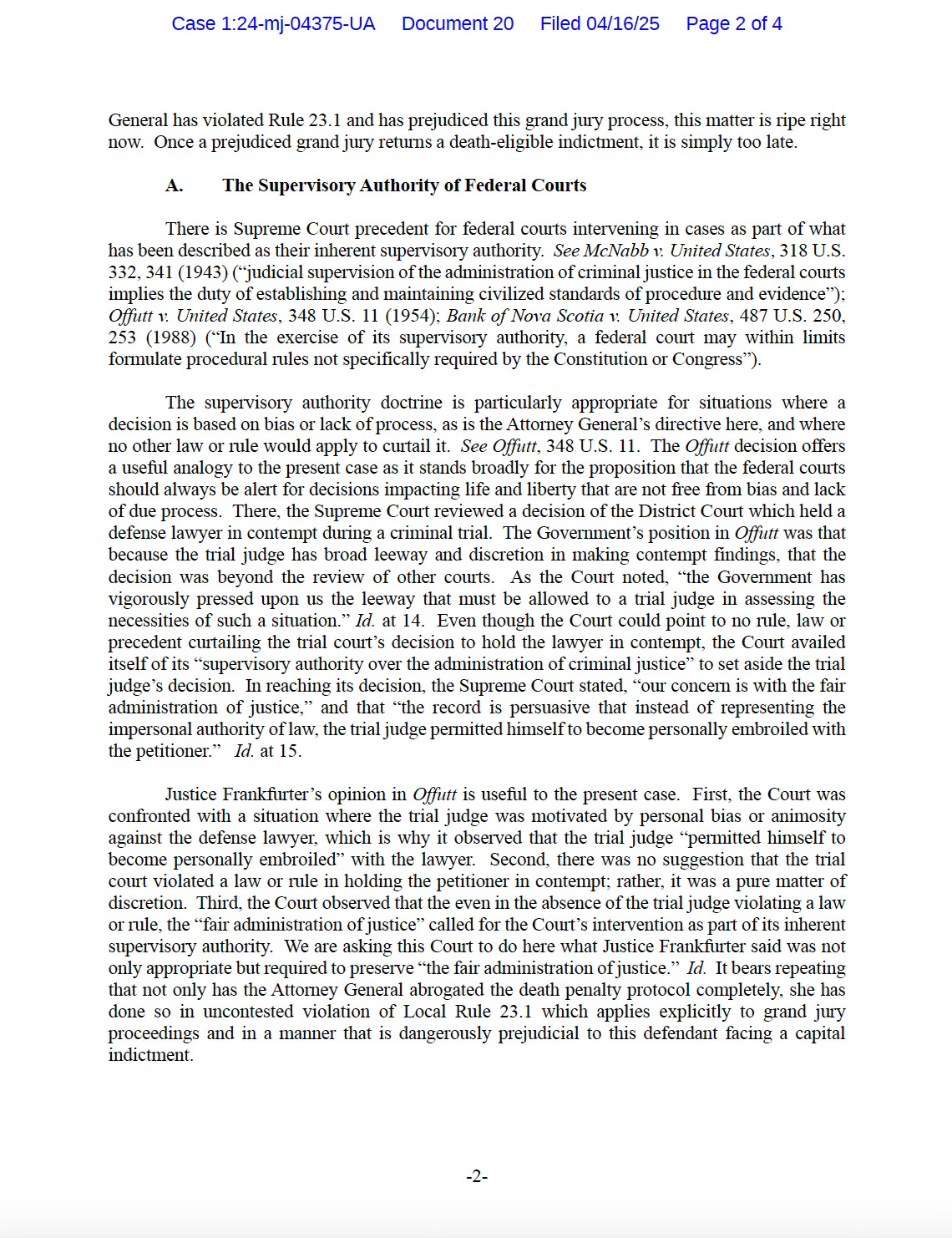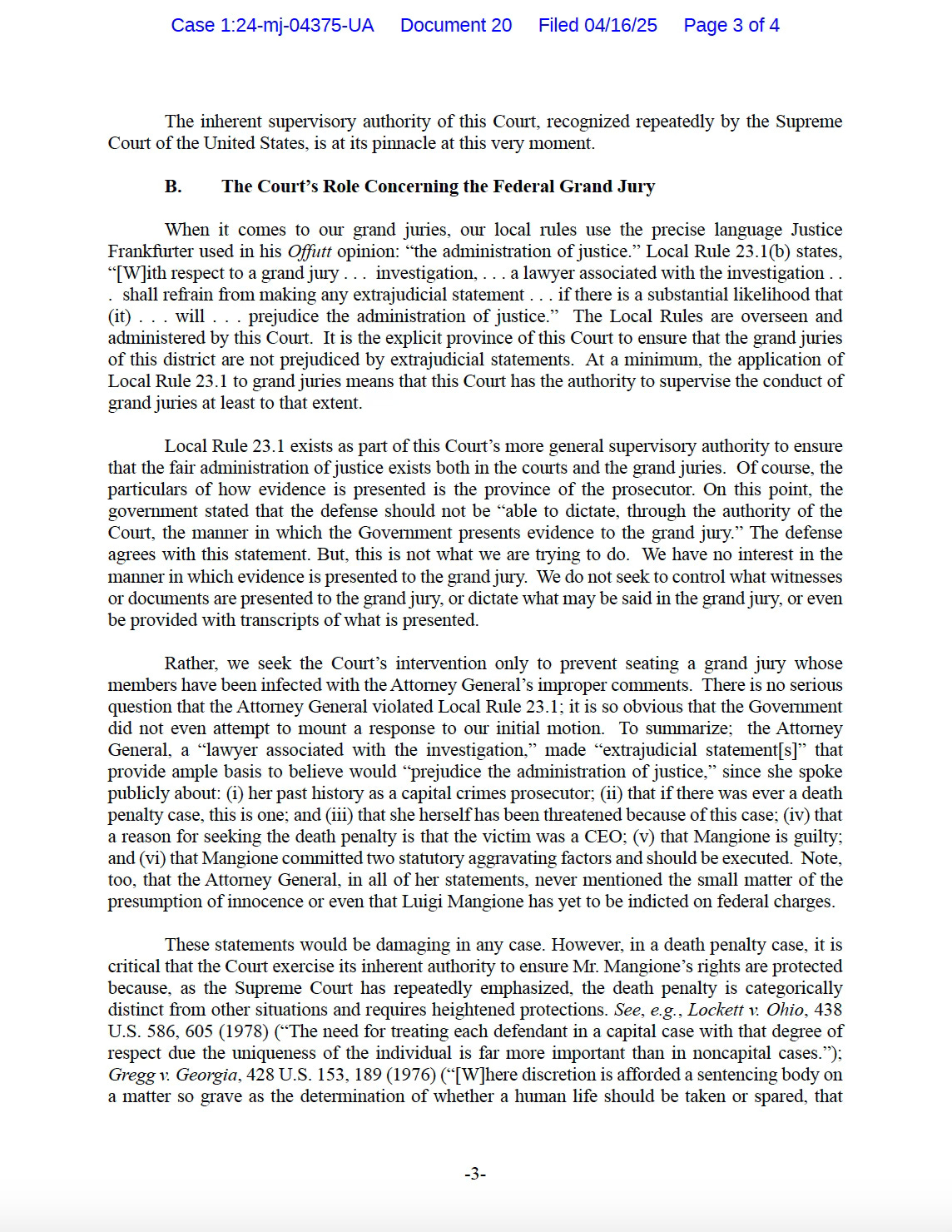Apologies for the delay in getting these up—assembling the PDF images took considerably longer than anticipated (and, as anyone approaching 38 might sympathize, felt like it took for-ev-er, said in the style of The Sandlot).
The process of compiling the filings related to the federal government’s pursuit of the death penalty began on April 15th, following the defense team’s initial Motion to Preclude the Government from Seeking the Death Penalty, filed by KFA and her team on April 11th. The U.S. Attorney’s Office responded on April 15th. Subsequently, the federal indictment against Mangione was officially entered on April 17th. He was arraigned the next day, April 18th, and his first federal hearing took place on April 25th. During that hearing, Judge Garnett asked KFA whether the defense would be “renewing” the Motion to Preclude, to which KFA confirmed they would.
Upon reviewing the federal docket on April 18th, it became clear that the original April 11th Motion to Preclude had been marked as “Terminated.” Judge Garnett’s comments and KFA’s response during the April 25th hearing confirmed this termination, which aligns procedurally given that the original motion was filed prior to the formal federal indictment. The deadline for the renewed Motion to Preclude has now been set for June 27, 2025—one day after the currently scheduled New York state criminal hearing. The Government’s response is due August 8th, followed by a final deadline of August 27th for the defense to reply.
While the earlier death penalty filings are technically no longer active, they remain valuable as a preview of the arguments likely to appear in the renewed motion and the forthcoming responses from both parties. All of the previously filed death penalty documents are provided below the next section, organized chronologically by their filing dates.
Clearing Up Some Common Legal Confusions
The question of whether Luigi Mangione will face the death penalty has been a driving force in the public discourse about the murder of Brian Thompson, for which Mangione now stands accused in three separate and concurrent criminal prosecutions. Much ado was made about the NY state terrorism enhancements to the murder and firearms charges, with a lot of misconceptions about the standard for the death penalty. Allow me to clear some of that confusion up.
First, Luigi Mangione is being prosecuted at the state level in Pennsylvania and New York, and by the federal government. Neither New York nor Pennsylvania currently allow the death penalty, so capital punishment cannot be sought by either of those state’s prosecutors. Second, while the terrorism enhancements are unique to New York and do not stem from the federal charges, they do play in as a potential “aggravating factor” under federal law.
The conditions under which it is legal for the federal government to sentence a human being to die are governed by 18 U.S.C. §3591 & §3592. Under §3592, there is a list of 16 “aggravating factors” for homicide that may be considered in determining whether a sentence of death is justified. Number 9 on that list is “substantial planning and premeditation,” which is defined as “The defendant committed the offense after substantial planning and premeditation to cause the death of a person or commit an act of terrorism.” This is the aggravating factor the federal indictment focuses on in the “Special findings” section following the four main charges.
While public speculation about the death penalty began about as soon as Mangione was arrested, the first serious indication that the federal government would actually pursue it was on Feb 4, 2025, when Attorney Avraham Chaim Moskowitz was appointed as “learned counsel” to the case by Magistrate Judge Katharine H. Parker. In federal death penalty cases, at least one of the defendant’s attorneys must be “learned counsel,” meaning an attorney with specialized experience in handling capital cases, particularly the complex legal and constitutional issues that come up when the death penalty is on the table.
Mr. Moskowitz’s Appointment appears below as the first filing related to the death penalty.
Next, we have the Defense’s April 11th Motion to Preclude the Government from Seeking the Death Penalty (I must warn you, it’s 33 pages):
I won’t comment too extensively, but would bring your attention to the central argument around “politicization” of the case. NYC Mayor Eric Adams and U.S. Attorney General Pam Bondi are not only mentioned by name, their statements about the case, Luigi, and capital punishment are core pieces to the Defense’s arguments for precluding the government from seeking the death penalty. I expect the renewed motion to be very similar to this one, with refinement.
Here is the Prosecution’s initial response to the above motion, dated 4/14/25 and E-filed 4/15/25. You may notice that it’s in the form of a letter to the judge rather than a formal opposition to the motion. This was an indication to me that there would be another motion in the future, or that something was going on with the original motion. The federal indictment was due by 4/18, so this signaled that it might actually be entered this time. This response is only three pages long, not responding to substantive arguments, but citing a lack of authority and lack of “ripeness” due to the indictment not yet being entered.
You can bet that the Government’s response due on August 8th will be more a more thorough and formal opposition, responding to every legal argument in the Defense’s motion. Upon receipt and filing of the above response by the Government, Judge Ramos ordered the Defense to reply by April 18th, if they chose.
The Defense filed their reply on April 16th. I know it can be confusing, but the Defense gets a chance at rebuttal to the Prosecution’s response.





